#or any old school 90s Hong Kong film
Text
Zosan love story except it’s a Wong Kar Wai movie. Imagine the chemistry. The tension. The romance.
#or any old school 90s Hong Kong film#anyone watched happy together? yeah that’s them#I’ve told my bf before how their fights would be 100x funnier and intense if they spoke in cantonese#oh to cuss the love of your life out in a slew of cantonese swear words#i could swoon#zosan#ramblings
11 notes
·
View notes
Note
what's your favorite thing about wong kar wai's movies? why do you like his movies so much?
wrote this in the notes app at 3am. this got very long. wkw’s one of my fave directors of all time
first of all, i did not like wong kar wai’s movies growing up. my first introduction to wong kar wai was with in the mood for love, and i always hated how slow the movie was—i could not understand the value of two middle aged people walking circles around each other on when i was eight years old. my mother was particularly fascinated with the movie and every few years or so she’d borrow it from the local library just to rewatch it by herself, or with me as an unwilling audience. maybe she just really liked tony leung like everyone else did, or i didn’t understand what she was going through back then. now, she watches it a lot less, but ironically i’m the one who watches it on a regular basis. when i look back, i realize my hatred of in the mood for love stemmed from my rejection of my mother when i was younger, along with anything related to my culture/heritage. it was my way of reconciling the isolation i felt in my new home at a young age—i thought that rejecting any part of my past would allow me to assimilate better (and for the most part it worked until senior year of high school give or take). i can say now that my former hatred/rejection of wong kar wai’s greatest work—his magnum opus—makes me appreciate him a lot more. like my mother taught me, it is best not to hate if you can love one day.
my real love and fascination for wong kar wai started when i was 18. the week after my first week of college finals, i watched his entire filmography (excluding anything post 2046) in one long sitting. i was exhausted from an accumulation of things: college did not go the way i expected and i hated science with a passionate sincerity by the end of the year. that year, i had also not chosen to go home. regretted not just going back to vietnam a lot and i spent the entire first year of college just missing it. i was mentally emotionally exhausted and homesick so i found immediate comfort and familiarity in wong kar wai’s films.
all of wong kar wai’s films are based around the simple theme of connection, each character desires connection with another —whether through strangers like in chungking express or estranged lovers in a foreign city like in happy together. every character is lost in their own world of loneliness, but they’re not consumed by it as they constantly venture out to find a cure for their loneliness. there’s a sort of warm tenderness to their eternal loneliness. wong kar wai’s characters are all very simple, but that just makes them the more normal. he adds an amusing, yet charming aspect to a lot of his characters, which makes them all the more real. at the end of the day, they’re the most ordinary of people, but framed in wong kar wai’s romantic vision of the world. for me, i can see myself in a lot of his characters, especially as i’ve now settled myself into my twenties.
most of all, wong kar wai’s movies remind me of home a lot. more than anything. vietnamese cinema barely exists, and his films of hong kong are one of the only threads of my childhood memories captured in film. in his films, his characters loneliness stems from an urban isolation and a desire to find home. how can one constantly be surrounded by people, yet feel so lonely? 90s hong kong reminds me a lot of early 2000s saigon, right before true modern urbanization began to take foot. the saigon i return to now is not the place i grew up in, everything i once knew with familiarity has become foreign (you could argue the same for hong kong too). like both the main characters in happy together, i’m very much far away from home now, but what makes it worse is i don’t have a home to return to anymore despite it still being there. the isolation i feel here is much less comforting than the familiar isolation of asia, it’s an entirely distinct feeling i’ve come to differentiate. the night version of hong kong in fallen angels reminds me very much of saigon at night when i was little—when i would cling to my aunts back on the motorcycle. even more, hong kong at night is an unmistakable feeling—a true moment of limbo that you can experience nowhere else as the city seems to slow to a stop before starting up again (the dim sum scene in fallen angels reminds me of my uncle taking me with him to smalls shops buried deep in hong kong’s markets. in my opinion, the most crowded, dirty, loud places have the best food).
one of the things i also love the most about wong kar wais films are they are essentially “of an era.” context heavily influences his films, and watchers should understand that his best films are primarily made in the decade of hong kong’s handover from the uk to china. looking back now, his films are representative of the end of hong kong pop culture culture. they’re the last threads of a former culture powerhouse in asia—hk cantopop, film, and tv throughout the late 70s to 90s had an immense influence on asian pop culture today. everybody knew and loved hong kong, because it was the only true source of quality pop culture in an age of barely any in asia. hong kong was the beginning of everything essentially. kpop even, i would argue, would not be what it is today without cantopop—many idols are modeled after the cantopop idols of the 80s along with western influence. it’s sad to see that hong kong’s impact has been increasingly erased over the past 20 or so years—hong kong is now a shell of it’s former self as it can never return to its former glory. wong kar wai’s greatest films are chungking express, fallen angels, happy together, and in the mood for love. they’re all made in the years predating or after the handover, and you can see the differences in feeling of each film as it nears 1997. happy together, aside from being a somewhat tragic love story, is also the tragedy of hong kong. the handover of 1997 seems to haunt that film as the characters are also far way from hong kong; they’re on the other side of the world. there’s a sense of fear and desperation that runs parallel to the main love story and i feel like people don’t see that the first time without an understanding of historical context. chungking express and fallen angels are two sides of hong kong—hong kong by day and by night—they’re wong kar wai’s love letter to hong kong itself before it disappears in the subsequent years (which it has sadly). both of those movies are time capsules of an era, they capture an atmosphere that is now gone in hong kong. 2046 is an extension of those four movies above—an imagining of how hong kong would be be 99 years after the “end” of hong kong as it is in 1997. and finally, wong kar wai’s greatest work is in the mood for love. it’s his magnum opus, and the true end of an era: for wong kar wai’s creative capacity, for hong kong pop culture, for the actors themselves. wong kar wai has been unable to follow in the mood for love successfully with other directorial features, it’s a masterpiece in itself in its inability for recreation. the movie speaks for itself, even maggie subsequently quit acting shortly afterwards because she felt she could never top that role—it was the end of her acting career in terms of era. everything that wong kar wai put out in the 90s is of an era, it cannot and never be repeated or recreated just as the old hong kong is gone (which is why his attempt to make sequels for those movies with blossoms and the chungking express sequel will be futile. wong kar wai does not realize that that era has indeed passed (and his his break up with christopher doyle has proved to be fatal for both of them).
finally, a small addition about wong kar wai as a director himself. he’s a cancer, very true to his nature, which explains how he can so fluidly translate and portray emotion in his films. they’re almost overflowing with tender emotion, but very much so in an implicit manner. i could never do that in anything i create, it’d end up being very much lynchian in manner, which makes me appreciate his films a lot more. moreover, wong kar wai has a certain way, an intimacy with all his actors. he brings out the best in them for only his movies, and that’s what makes him so special. also, i relate a lot to wong kar wai’s method of working ..the man is one of the worst procrastinators he’s worse than me. he almost never plans or writes scripts for his movies. most of his films especially in the 90s are very much “go with the flow” improvisation (u can see that the characters are very much the actors even it’s hard to distinguish). he was editing in the mood for love up to the last minute before final submission for cannes, that’s just how much of a procrastinator he was and why it’ll take him a million years to release the chungking express sequel. it’s amazing to think how all of these great movies from wong kar wai are technically equivalent to 2000 word essays submitted a minute past the deadline. what i imagine is how different would his work be if he’d planned ahead (how much better would my essays be if i didn’t write them at 3am?). but i guess we can all see how much he’s changed in the release of his criterion collection—-he’s not the person he once was and he can’t recreate the past.
if u read this far i love you thank u for reading my inarticulate nonsense thoughts. i hope u like wong kar wai a lot more than before
60 notes
·
View notes
Text
Point-by-Point Scoob Analysis (second viewing, bc I’m bored)
Spoilers below!
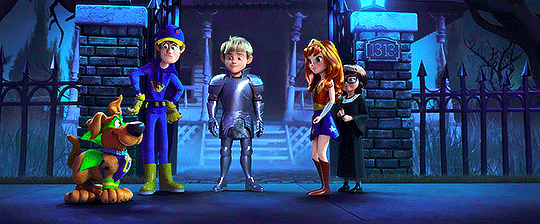
Why Venice Beach, I have to wonder? And why this song? I don’t dislike it, but I’m curious about the reasoning
The gyro scene is really fun XD
Shaggy’s intro is perfect - the music, the “Casey’s Creations” and Mystery Machine aesthetics, just beautiful. You can see the little shake in his hand as he switches to the podcast - he’s so alone :(
“I lose a lot of balls” funny AND sad. And Young Sheldon being lonely is on point for him
Gyro meat - convenient! But yeah, I can see how Shaggy’s weird lunch combos would be off-putting to others
Oh, he found him ON Halloween?? That’s so odd. (But on brand)
“Well mostly man. It’s mostly just the suit that’s falcon.”
“Like no way bruh” Really? That... sounds odd coming from Shaggy.
...Since when do young boys care about blood sugar? Also, “We’re okay with that” XD
Baby Fred, Daphne, and Velma are also perfect
...No. No no. RBG is not a Slytherin. But that, braces Velma and Hogwarts references very much modernize the series and put them firmly in modern day (without going too out there).
The kids are such badasses, it’s awesome
The replication of the original credits is *perfect* - they even got the original Space Creep sound
Scooby handles the accounting? Also, how old are they supposed to be? If they’re expected to pay taxes and get called millennials, are they late 20s?
I’m really not convinced by the Simon Cowell bit, I’m sorry. They could have made him a bland British investor, not attached to the name. There really should have been some more time invested in this scene (but I AM glad Mystery Inc never agreed with Simon, or even considered he was right) (Also Simon - haven’t you heard of networking? Making friends to get ahead?)
Scooby bowling is such great physical comedy, and the chase is very Scooby Doo
Hyper-specific police code ftw
Falcon Fury!
You know Scooby and Shaggy are having a bad day when they’re *happy* to be in danger
The falcon entrance is admittedly funny
I really wish if Blue Falcon and Dynomutt had to have such a bug role, there’d been more about how Dynomutt feels about his original owner basically ditching him. It seemed like that was supposed to have more significance, and then it didn’t.
The shake button XD and Dastardly is fantastic from the first
...right, because this script wasn’t also written by middle-aged men.
Also, how’d she know about the blue light?
Velma fanning out is fun

The robots make me uncomfortable, and I’m not sure why.
Muttley <3
I appreciate that Falcon was trying to be resourceful.
“You’re now out of... everything.”
Scooby and Shaggy’s gift is to inspire - they’re the lucky charm
...And this is where I started to dislike Falcon. He’s just... he’s too dumb. The bravado is one thing, but then Fred is a little too similar. I think Falcon is supposed to be a foil for Shaggy, but I don’t know... didn’t quite work for me.
OH! I didn’t get the connection between the Greek restaurant at the beginning and the Cerberus plot until now! Nice.
DeeDee deserves more credit, hands down. Honestly, make her Blue Falcon.
I love all the references in the arcade - Hex Girls, Hong Kong Phooey, LaffALympics
The fun house scene is really cool! And funny, so colorful
My mom really liked this bit with the Ferris Wheel and the bumper cars and the smoke cloud - more traditionally cartoony
And I started to dislike Falcon more here. -__- (Like you acknowledge Shaggy is hurting and then just decide let’s give the dog a super suit instead of focusing on the mission? 90% of what goes wrong in this move is his fault and I don’t like it)
Okay. I get that Shaggy is really insecure. And Scooby isn’t reassuring him at all. But it feels like there’s more going on here, and I wish he’d had the chance to talk about it more than he did to give us more context. (But I still maintain this is less contrived than Shaggy falling for that Mary Jane girl in the live action film, so I’ll let it pass)
I actually really like Daphne’s characterization as the people person (though I feel real bad Grey DeLisle wasn’t given a chance to voice her), and how the gang are quick to realize how much Shaggy and Scooby contribute. They were never down on them, but it’s still important.
Messick Mountain :)
Velma as Dynomutt was great
I do really like the plot and how it ties to friendship. Also, Muttley is perfect, my parents loved him.
Poor man’s Hemsworth
I initially questioned whether Scooby would really be safer off the ship. But of course that’s not the point - this kicks off the conflict. Remember kids: NEVER give someone an ultimatum.
I appreciate that this was the only poop joke in the movie. Unlike the original Scooby Doo movie...
And now Shaggy realizes he was an ass. But seriously - the “Shaggy’s refusal to change is tearing them apart” thing needed a little more finessing. I see where they were going, but didn’t quite make it home.
The Captain Caveman bit was a little... eh? Not sure what I’d put there instead. It does the point of showing Falcon and Scooby they’re not really traditional hero material.
Scooby looks so sad as he gets taken :(
See, this is where I feel like Falcon and Fred were too similar, though it is pretty funny
See... I don’t think this speech was earned. It’s beautiful. If I saw it in isolation it would be great. But something was missing in the buildup. I can’t see how Shaggy made it from “I screwed up” to “Friendship changing is okay.”
This whole Athens bit is so beautiful and cinematic, I hope this gets a chance to be in theaters someday!
Flying mystery machine!
FLUFFY!
Mystery Inc reunion <3 But poor Fred, his van up in flames
(Someone set this to “Your Wagon is On Fire” from Trail to Oregon!)
Dastardly and Muttley is actually pretty sweet, but not a Scooby-Shaggy redux. (My parents love the snicker)
THE ASCOT RETURNS! But this is usually the part where he figures out a trap.
Scooby and Shaggy growing and embracing their roles on the team <3
“I’m so weak” - my parents and I laughed hysterically at this
The Dynomutt-Falcon moment was nice :) (again, not sure it was earned). Also, cool wings are cool.
This really is a Scooby Doo Avengers
Shaggy becomes important in the worst possible way :(
“Back when we were kids, you saved me. Now it’s my turn.” Damn with the feeeeels
Scoooby :(
“But why would Alexander make a gate that would separate him from his best friend forever?” Martyrdom is not the only way, y’all
Aw, Dynomutt is trying
Had to throw in an unmasking
I guess they got backing after all!
(Wait... was Dick Dastardly the Simon Cowell at the beginning??? That would make so much sense, actually!! Is this confirmed?! )
Don’t know how I feel about the new Mystery Machine, but Fred is happy :)
DeeDee deserves a raise
Falcon Force! Falcon realizes he needs friends too. But Dastardly is at large...
Okay, second watch was less off-putting. I do like it! It’s colorful and sticks to the cartoon, and there’s clearly so much love here, for Scooby and all of Hanna Barbara. Admittedly, this isn’t really a mystery - it’s a superhero origin story, which admittedly the trailers should have prepared me better for. But we’ve seen Scooby mysteries on the big and small screen, so I see why they had to change it up to justify such a blockbuster animation project. (Not unlike Recess: School’s Out going from middle school slice of life to save-the-world adventure.) And we do get mystery-solving shenanigans in the beginning.
But as a result, things do feel a tad bit dumbed down, particularly with Blue Falcon, Fred, and Shaggy’s development. I don’t love that aspect, but I can see why that compromise had to be made.
So all in all, I think it’s a solid film! It’s more Trolls than Pixar, but honestly? Not sure I’d have Scooby Doo any other way.
21 notes
·
View notes
Photo

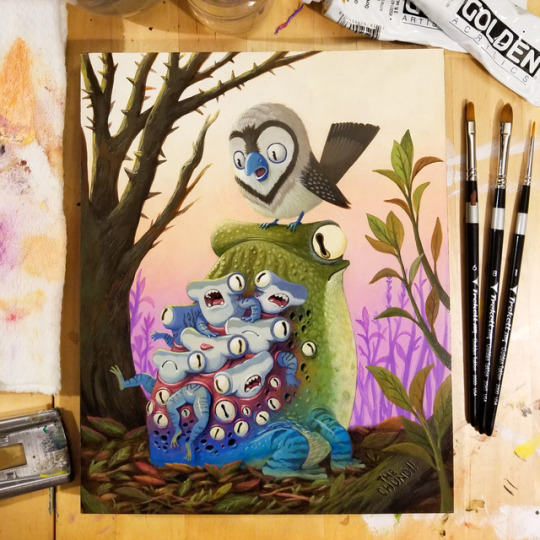



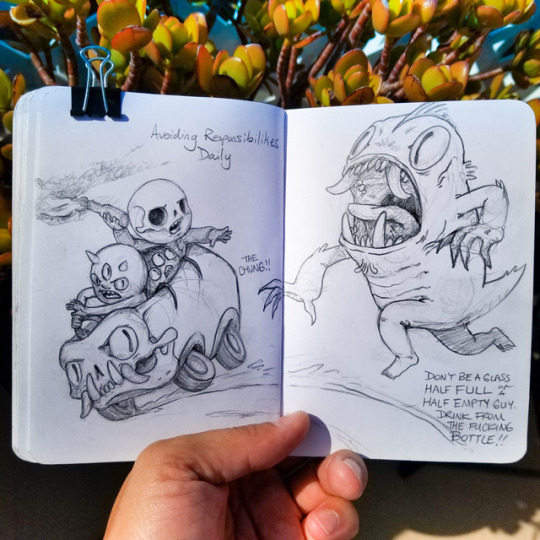


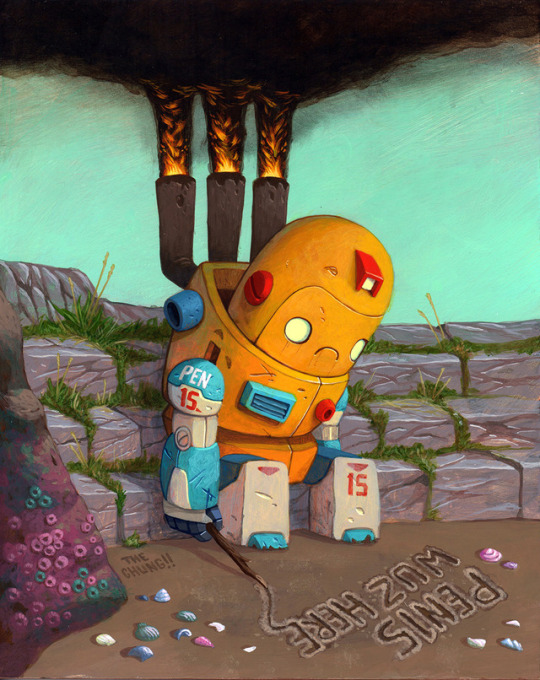

ART SCHOOL | Q&A WITH DAVID CHUNG (THE CHUNG)
Artist David Chung’s paintings, drawings and sketches are filled with colorful anthropomorphic characters from sword wielding pandas to rainbow spilling landscapes where skeletal heroes battle fuzzy cute creatures. Drawing from his own experiences and psyche, David’s uses his adorable and hilarious creations to help deal with the everyday stresses of life and as a form of catharsis. We’re excited to feature the work of David and talk about his art, his work as an Art Director at Dreamworks TV, and what new projects he’s got in the works!
Find out more about David Chung by taking the leap below!
Photography courtesy of the artist.
Introduce yourself?
My name is David Chung, but a lot of people might know me as The Chung!! I’ve been living in Los Angeles for the past 11 years now, which technically makes California the longest place I’ve ever lived in my entire life. During the day I work in animation, currently as of this interview, I’m an art director at Dreamworks TV, but at night, I’m my own artist, free to do whatever I want!
How did you get into painting and art as a kid? What kinds of things were you influenced by?
I’m not really sure how I got into art as a kid. I’ve been drawing for as long as I can remember. Much like all kids, I’ve always just enjoyed drawing and making art. I realized early on that I could be as weird as I wanted to be in my drawings, and that was a really liberating feeling. Earlier in my childhood I was raised in Hong Kong and Taiwan but my highschool years were spent in Upstate New York, where I graduated from. I pulled a lot of my influences from growing up in Asia and having a Chinese background, but the subjects and humor mostly came from living in the States.
How do you describe your work to folks who’ve never seen it before?
I might describe it like watching an animated kids’ movie with a lot of jokes your pervy parents would appreciate.
You have various creatures and characters throughout your work that we love. Storytelling and humor are elements in your works as well. Can you tell us a little about how each piece evolves? What is your general artistic process like?
I’ve been finding myself creating new characters based off of new ways I need to deal with my life at the moment. The characters that are in my work are compartmentalized parts of my psyche or emotions. Being able to take the everyday stresses of life and make cute characters go through it in a more harsh and humorous way is a really effective form of catharsis for me. About 90% of the subjects in my work are autobiographical. The humor in my work is just another way for me to prevent myself from ever taking myself too seriously. If I can’t laugh at my own work, then what’s the point.
Do you have a main protagonist in your work? And who or what is it? How did it come about?
It really depends on what I’m going through at the time of my life when I paint my characters. For example, my XiongMao (Panda) character was created during some pretty rough times. He represents my persistent side to survive. Grimothy (the little reaper dude) and Xiaguai (his little chinese demon friend) are my two mischievous daydreamer characters that are all about ditching their responsibilities to have fun adventures. Pouty Pig is the side of me that throws silent tantrums anytime he is unhappy about a certain situation, which apparently is a lot. These are just some of the few recurring characters in my work depending on how I’m feeling. I even have a few recurring antagonists such as the Happy who are pink soulless zombie-like creatures who roam the earth seemingly always happy, but they feed off of people’s energy like vampires. If you ever let them get a whiff that you’re not happy, that’s when they attack. I think we all know people like this. Right?? They’re the worst. I hate them.
What was your last adventure that showed up in one of your work, thematically or just visually?
I do these sketches in my Instagram feed called “Procrast-O-Sketches” that usually follow my most current adventures. The overall sketches can be interpreted however you like, but for myself, friends and family in my inner circle, the subject matter is pretty esoteric.
A pretty straight forward Procrast-O-Sketch is from Sept 21, 2018. We just moved into our new house in the beginning of September, and about 2 weeks after moving in, my 2 year old kept crying that there is a monster living in the house. He keeps saying it’s a shadow man that “kind of looks like Daddy” but sometimes it turns into a dog-like creature. He’ll be playing and being super happy, then all of a sudden he’ll see his shadow man, then will let out a terrified scream, scramble over to myself or his mom and cry that “The man is back!!” We’ve been trying to turn it into a game now by going monster hunting together, which seems to be helping. At least helping him... I’m terrified as shit now.
What is your favorite thing to draw or paint?
I love drawing or painting creatures and characters in familiar situations that are way worse than my own.
What are your favorite tools?
Currently, I always have my little Pentalic Traveler Pocket Journal, a kneaded eraser and a good clutch pencil with me just in case I need a quick therapy sketch session to take out any frustrations. I feel like brands and mediums change all the time, but a good ol’ fashioned pencil and a sketchbook are always constant.
What’s a medium you have yet to try and would love to take a stab at?
Oh man, there are way too many mediums I’d love to try one day. I would really like to try oils again. I haven’t messed around with oils since I was in college. I also really want to try out ceramics and bronze casting.
Not only do you draw and paint, you also work as an art director and designer at DreamWorks by day? What’s that like and how did you find yourself working for such a cool company?
Dreamworks is a pretty awesome company to work for, and I’m not just being paid to say that. They’ve made me sign a contract to say that. But you know, overall it’s pretty awesome because of the people. I love being able to collaborate and riff off of other artists every day. All of whom are working toward the same goal of making the best looking product possible. I’ve been working in the animation industry for about 10+ years now, and over the past decade, I’ve met some really great people who I know I’d work with again and again like I have in the past. So when a lot of those people who felt the same about me ended up at Dreamworks, I was brought on over, and I’m super grateful for it.
How do you balance your work life with your artistic life? Or are they sort of one in the same?
It’s actually pretty easy and difficult all at the same time. I deliberately try to separate my work-life from my art-life because what I do after work, is mine and mine alone. This keeps me from taking anything too personally when there are ridiculous amounts of notes and revisions to be made at work. Nothing is personal, and I’m totally okay with that. My job is to provide them with the work that they want. It’s a lot easier to make revisions when I know that as soon as I go home, I can start working on my own personal stuff that nobody can say shit about.
The hard part is finding the time to have an art-life after work-life. It usually means eliminating good health. Fortunately passion usually wins out over sleep, but unfortunately, “usually” isn’t always. Typical days at work can last 10-14 hours, and when I get home, I still want to be able to hang out with my wife and kid, which means I won’t even be able to get started on my own stuff til around 12-1am. Especially lately, due to the monster keeping my son up all through the night.
What are you constantly inspired by? And who are some of your early and current art influences?
I’m constantly inspired by life and all of the little idiosyncratic behaviors we have. Human life is so interesting even at its most mundane moments. There’s always inspiration to be pulled from who we are. When I was in the second grade, I saw Alien for the first time in my life on TV. It fucked me up. I needed to know what this monster was. Then I found out about H.R. Giger when I got a little bit older. It wasn’t necessarily the style that inspired me, but the way the he created. It seemed like an obsession that he turned into a profession. I didn’t even know being an artist for a living was allowed! Lately I’ve been super digging Travis Millard (IG: @theotherfudge), Alex Solis (IG: @Alexmdc) and I was recently introduced to Kamila Mlynarczyk’s (IG: @Woodedwoods) work which is pure insanity and I love it so much.
What do you do when you are not painting or drawing?
Lately it’s trying to spend as much time as I can with my family and soak as much of it up as I can before it slips away. While doing that I’ve been messing around with photography and filmmaking as a hobby. Filming my son doing weird shit is super fun. He makes a great subject.
What advice would you offer to an aspiring artist who might wanna follow in your footsteps?
You gotta want to do it. And not just because you think it’s a good way to make money. You have to want to do it because you love it. That’s really where it all begins. Next step is to just go fucking do it.
What’s your best Art School tip that you want to share with folks? Could be technical or just advice.
This is a continuation of my previous response, but it’s important, after you “just go fucking do it” expect to fail. Don’t even just expect it, LET yourself fail. As long as you learn something from it and never stop trying, you’re totally allowed to fail all the time!
What do you think you’d be doing if you weren’t an artist or doing anything art-related?
This one is difficult, everything I can think of that I’d possibly be doing is art related. I’ve always wanted to be a fiction writer or a filmmaker, but those can be very creative. The other thing is to start my own business producing products for creative enthusiasts.
What are your favorite style of VANS?
Every time I end up buying a new pair of VANS, I always end up getting the Authentic style. You can never go wrong with them!
What’s coming up for you the rest of the year that you’re super excited about?
I’m super excited about two new toys that are currently in production with Martian Toys and Wetworks. Also there’s a bunch of new stuff I’m trying to launch on my own that I’ve been pretty excited to work on, I just need to find the time!
FOLLOW DAVID | INSTAGRAM | WEBSITE
10 notes
·
View notes
Text
Crazy Rich Asians (2018): The Flawed But Necessary Asian-American Cultural Milestone
(Apologies! I keep forgetting to update my Tumblr... repost from my Medium account)
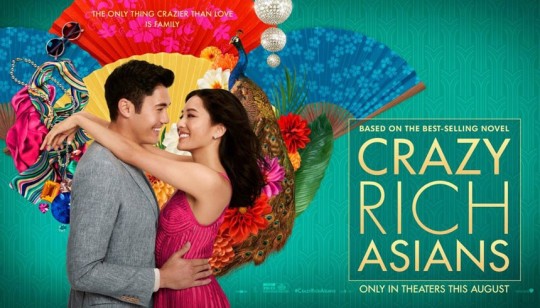
There is so much to unpack before you can even talk about Crazy Rich Asiansin any meaningful manner and understand why so much of the Asian-American community has gotten behind the film via the so-called #goldopenmovement.
I think the easiest way to begin is to imagine what life would be like if you had no sense of belonging within the culture you inhabit. Books, music, television, film, theater, fashion — none of it reflected who you are and how you were necessarily different from everyone else. For the last half-century, this is essentially how Asian-Americans (and by extension, Asians-Canadians) lived their lives.
I can only write on my behalf, but I knew at an early age that I would never really be considered a “Canadian”, because as much as we like to pretend we’re in some kind of post-race multicultural utopia, I still feel foreign despite having lived in Canada for essentially my entire life.
But obviously that’s not necessarily unique to my experience — certainly a lot of people feel alienated within their own homelands because they don’t look like, act like, or otherwise inhabit the space of normativity that defines “Canadian-ness” (or “American-ness”).
But I can’t really claim to be “Chinese” either. Certainly I am racially and ethnically Han Chinese, but culturally I am as far removed from being Chinese as one possibly can be as a “Canadian Born Chinese”. I can functionally communicate in Cantonese, read Hanzi at a grade school level, and I’ve never actually been to China or Hong Kong, and my Chinese cultural references are old John Woo and Stephen Chow movies. There is a cultural void that I’ve felt for most of my life, and it comes from — as Crazy Rich Asians explains — being a “banana”, where my race and my cultural context have created the extreme feeling of alienation that is familiar to most, if not all, minorities living in North America.
So this is where we land on the North American notion of the hybrid identity that has developed over the last century. I’m not Chinese, I’m not Canadian, but I exist in some undefined border — the liminal space between the two — as a “Chinese-Canadian”. But what does that even mean when there is no culture that defines Chinese-Canadian identity? I don’t want to deny the great cultural contributions of artists such as Mina Shum or Wayson Choy and many others (Double Happiness is still a foundational text for me in terms of being able to articulate the fact that I don’t have an identity whatsoever), and I mean no offence when I suggest that these artists aren’t household names (and I’d much rather re-read Choy than yet another Atwood novel…).
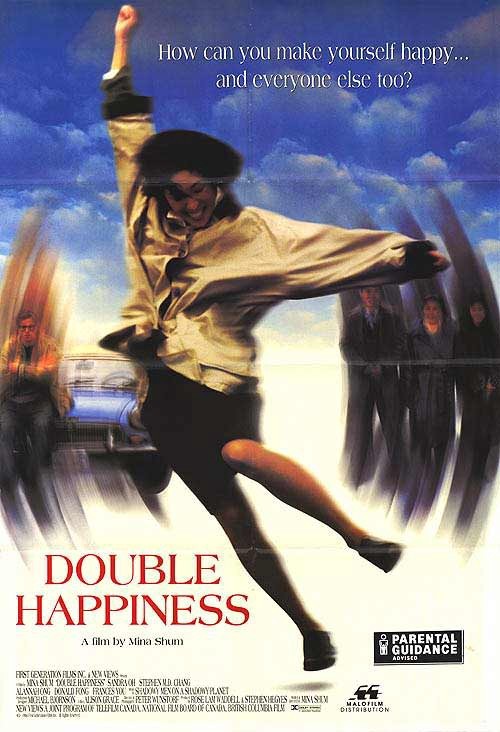
I came to Double Happiness when I was in my teens, already feeling the anxiety of not having an identity and being unable to articulate it because there was simply no outlet for me to express my inability to connect with the greater culture around me. I saw myself in Sandra Oh’s Jade, a woman who would never be Chinese enough for her parents or other Chinese people, but who isn’t Canadian enough to be accepted by Canadian society as an actress (I’m sure this was something that Sandra Oh had to fight against during the early parts of her career). I think it was at that moment that I understand that I would always feel like an outsider in my own homeland, not necessarily because I was marked with a visible difference, but because it took so long for me to see myself reflected in the culture that I consumed.
This isn’t necessarily a unique Chinese or even Asian-North American experience. As I wrote several years ago when I began to unpack the importance of yet another seminal Asian American cultural moment — the debut of Fresh Off The Boat — both the “real” and fictional Eddie Huang embraced hip hop because he was able to relate to a culture defined by alienation. Meanwhile, Gene Yang’s American Born Chinese ends by having the main character admit that he can never be white and escape “Chin-Kee”, the specter of Chinese-ness that haunts his every waking moment, and accept that being Chinese is a part of what defines him even if he doesn’t necessarily explain how that acceptance manifests itself.
But the fact that I can make references to a hit ABC sitcom and an Eisner award-winning graphic novel in order to try to articulate some notion of Chinese-American identity is precisely why it is so crucial to have a culture that represents the unique situation of being neither Chinese and neither American (or Canadian).
I love James Hong and respect him for his long career and the work he has done in order to help insert a Chinese face into American culture, but my entire identity in the early 90s was essentially tied to this clip:
youtube
The fact that I can’t remember any other “role models” from my childhood except James Hong putting on that accent and annoying Jerry, Elaine, and George is perhaps a sad reflection of my limited worldview as a child of the 90s, but also a condemnation of what happens when there is no one for you to look up to.
We are so hungry for representation because we live in a cultural vacuum, where the only other cultural reference you can make is to The Joy Luck Club or how fucked up it was that people thought this was okay:

It’s interesting because Hari Kondabolu’s attempts to address the problematic nature of Apu from The Simpsons touches on this exact same anxiety, where being South Asian is defined entirely by a single cultural touch point that can influence your life forever (that’s even before addressing the indignity of being represented by a white man putting on an accent in a bout of modern brown-face). Thankfully between The Mindy Project, The Big Sick and Master of None, South Asian-American representation has certainly improved in the last few years.
That’s not to say that East Asian-American representation, both on screen and off screen, hasn’t improved either. In film alone, Justin Lin basically built up one of the most improbably popular blockbuster franchises in recent history out of nothing — made more miraculous when you think about how the Fast and Furious films were culturally diverse before Disney decided that maybe their superheroes didn’t all have to be white men.
But even so, it’s been contingent on the Asian community to just accept things the way they are and not raise too much of a commotion about cultural representation. So when Tina Fey decides to double down on her racism with an episode of Unbreakable Kimmy Schmidt about how Asian-Americans humourless internet trolls who don’t understand comedy, we’re just to accept the fact that she above criticism. When Ghost in the Shell ends by explaining a Japanese girl had her brain carved out and placed into Scarlet Johansson’s body, we should be grateful that they mentioned the character’s Japanese origins at all. When Scott Buck refuses to address Iron Fist’s Orientalism, we just have to accept that no one is allowed to change the origins of a character because comic books are sacrosanct.
All of that explains why Crazy Rich Asians is such an important film for the community. With all of this cultural baggage on their backs, I respect the sacrifice Kevin Kwan and Jon Chu made when they eschewed an easy Netflix deal in order to bring the film to theaters even more than I did when I had initially read the interview.
It’s not that there haven’t been countless great Asian-American films made between The Joy Luck Club and Crazy Rich Asians. Justin Lin’s own Better Luck Tomorrow, or Only the Brave, or Saving Face, or Eat With Me, or the recently released Gook to just name a handful are great films in their own right for telling stories about Asian Americans that simply aren’t reflected in the culture otherwise
(Edit: I’ve been told that I’ve been remiss in not including the Harold and Kumar trilogy in the above list. Apologies to John Cho and Kal Penn!)
But the only way to get the culture to pay attention — not just the people consuming it, but also the people producing it — is to make the biggest impact possible and even in 2018 with streaming services and video on demand, the path to cultural relevance is still through a major movie studio that can both promote your film and widely distribute it across the world. It’s unfortunate, but that’s why people still point to The Joy Luck Club and don’t mention any of the smaller independent films that have come out since then. The fact that the last film before The Joy Luck Club to feature an all Asian cast to be distributed by a major movie studio was Flower Drum Song in 1961 (which is a film/musical that probably has as much, if not more, cultural baggage associated with it than even The Joy Luck Club) points to the significance of Crazy Rich Asians and why it has become a moment for Asian-Americans.
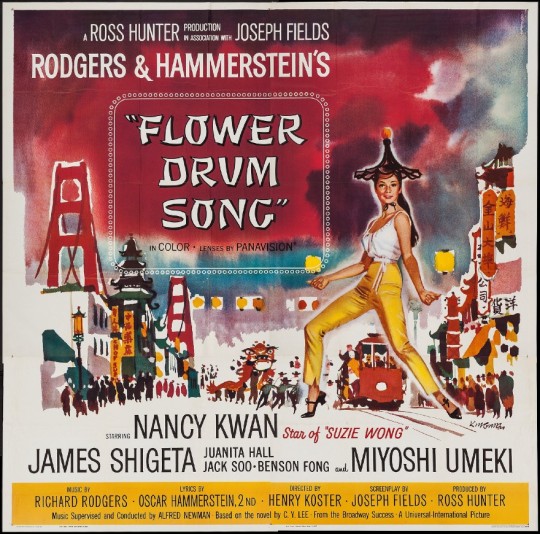

Kevin Kwan made another important production decision that drives home how much is riding on this film’s success. During pitch meetings, Kwan recounts meetings where producers suggested that having a white actress in the Rachel Chu role would make for a more successful film — to pull a quote from the interview, apparently he was told that “it’s a pity you don’t have a white character” — makes his decision to option the rights to his book for a dollar in order to maintain creative control a moral stance against Hollywood producers who don’t see any value in Asian actors.
Certainly the film’s fish out of water story could have easily been adapted so that Rachel Chu became Rachael Churchill (starring Scarlett Johansson or Emma Stone, of course) and many of the beats would have been the same. But his film is so powerful precisely because Rachel (Constance Wu) is Chinese-American. She isn’t Chinese, as Nick’s mother Eleanor (performed with perfect stoicism by Michelle Yeoh) constantly points out throughout the film, and that’s actually not a problem for her. In fact, the film goes out of its way to show how her Chinese-American identity helps her navigate the precariousness of Singapore’s socialite lifestyle, allowing Rachel to be proud of being a “banana”.
Are there problems with the film? Undoubtedly. The fact that the one time South Asians are shown in the film involves using them as comedy propspoints to narrow focus of the film and how much it ignores of the realSingapore. Or how Oliver (Nico Santos) is queer, but is never actually shown with another man, perhaps because gay sex is technically still a criminal offence in Singapore. Of course, the title itself points out that the only poor people shown in the film are the servants who presumably slink back to their cramped government subsidized high-rises after they are done serving the crazy rich Asians who employ them.
Even if you ignore the social issues, the film itself isn’t perfect either. It has the feel of an adaptation where they didn’t want to cut any of the cast, but had to cut all of their supporting stories in order to get the film to hit the 120 minute running time. And I mean this with utmost respect to Jon Chu’s career, but I still haven’t forgiven him for what he did to Jem and the Holograms a few years ago and there are times when the film feels just as workmanlike and banal as that failed outing. You’d think the climatic moment where Nick chases down Rachel in order to propose to her (again) would be wonderfully cinematic, but it’s perhaps the least exciting visual moment of the film. Similarly, the much written about Mahjong battle at the end was a great moment in spite of the direction, not because of it.
There is a lot wrong with the film. That’s unavoidable. Do I wish a studio picked up George Takei’s Allegiance and I was writing about about a big budget film about a Japanese-American family torn apart by the forced internment policies of a racist United States? That would have been great.
But in a way, this is very much like Fresh Off The Boat (and not just because of Constance Wu). When the real Eddie Huang quit narrating the show because it deviated so far from the harsh reality of his childhood experiences as a Chinese-American growing up in Florida, I totally sympathized with his decision and understood his rationale. Fresh Off The Boat isn’t an unvarnished look at the Chinese-American experience, nor is it ever going to touch on issues of race in a meaningful way. For better or for worse, it’s just not that kind of show nor is it trying to be. But the producers of the show were able to include an episode where the entire B-story was in Mandarin, a first for a family sitcom in America.
Crazy Rich Asians is very much in the same position as Fresh Off The Boat. It’s telling the world that Asians and Asian-Americans are just people like everyone else, facing similar problems as we try to carve out an existence in the world and live our lives. We fight with our in-laws, we get cheated on by our husbands, we have rivals who try to sabotage us, we deal with friends that we only talk to because we grew up with them and not because we have anything in common with them, we even deal with racism from time to time (although most of us don’t have the money to humiliate a racist by buying their place of employment).
It’s not the Asian-American of Do The Right Thing, let alone BlacKkKlansman, but I have to hope that if this movie is a success, then those types of stories will come in time. Maybe they’ll make a spin-off featuring Nico Santos’ Oliver called Crazy Rich Gaysians and have his character confront Singapore’s endemic social and structural homophobia. Or maybe they’ll make a Rosencrantz and Guildenstern are Dead-like movie about the two guards where they discuss the existential crisis of life defined only by serving as a backdrop to the stories of the rich. I believe that we can get there eventually, we just need to use Crazy Rich Asians as the push to get us there.
Anecdotally, the movie feels like it is appealing to more than just Asian-Americans desperate to be represented on screen. When the credits started rolling at my screening, a couple of Jewish women (who went out of their way to build a connection with me by telling me that Jewish culture and Chinese culture are connected by Mahjong and Chinese food at Christmas) told me that they had a great time watching the film. And in the moment of hesitation I felt when they unknowingly asked me to represent my entire race and culture by asking me if I liked the film, I told them that I did.
Maybe I don’t like the film for all the same reasons that they did, but that’s the point. Crazy Rich Asians is a film that is miraculously both culturally specific and broadly appealing. Even if you don’t care about any of what I wrote and just want to watch a good romantic comedy, you would be hard pressed to find one as good as this one in recent years. But if you are that Asian-American who has been waiting for over two decades to feel like you belong to a culture that has largely ignored you and taken you for granted, you will be witnessing a moment of cinematic history. That alone is worth the price of admission.
I didn’t have any place to put this, and it’s such a minor point that really isn’t worth including, but as a former teaching assistant I felt compelled to at least mention it.
So the film is supposed to take place during Rachel’s spring break. We see early in the film that she has a TA (that she tortures), so it’s possible that she dumps all her papers on him and tells him to grade everything while she’s having an adventure in Singapore. That’s perfectly fine, but it seems clear that she ends up staying in Singapore for much longer than a week (there is at least 3 days of flying time depicted in the film).
This means that there is no way she gets back in time to teach her class, assuming she even goes back after getting engaged, which means the poor TA is stuck holding the bag with a bunch of undergrads who will probably blame him for their grades not being in or for class being delayed.
Won’t anyone think of the poor teaching assistants who don’t have billionaire partners to sweep them off their feet?
10 notes
·
View notes
Text
Jet Li - China’s Hero
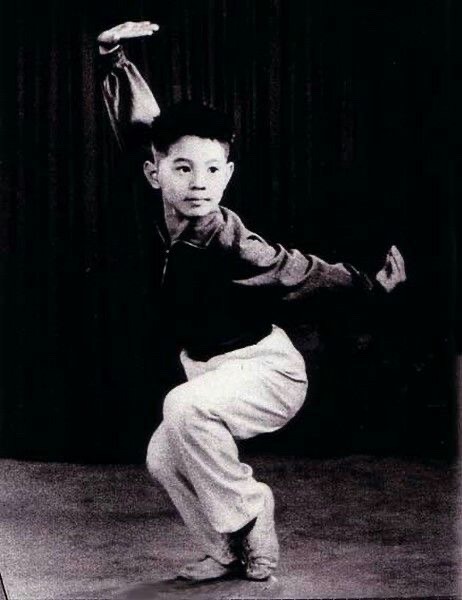
By Sam Cave
Beijing, 1963. A child is born into poverty, the youngest of five. By two years old, his father has passed away. His family can’t afford meat, so young Lie Liajie is often hungry but never complains. When he is eight years old, his mother enrolls him in a summer course for martial arts. He shows a natural talent for Wushu, and his instructor takes notice. The boy attends a non-sparring Wushu event. Soon after, the instructor refers him to Wu Bin, coach for the Beijing Wushu Team. With his family’s permission, he is allowed to join. The coach takes a special interest in the boy, making him practice twice as hard as the other students. The criticism is harsh and constant, but he has good to food to eat and a sense of purpose that will help him to rise above his environment - China’s rocky crossroads between the Great Leap Forward and Mao’s cultural revolution.
A few years pass. Once a year the team is allowed to go to the movies. They watch Shaw Brothers and Shaolin five venoms, and sometimes Jimmmy Chang. One night the team gets to see a film called Fist of fury, Starring a westerner name Bruce Lee. the older boys love the film, and they clap and cheer, some of them smoking cigarettes and drinking rice wine. Their instructor chaperones hush them but also smile and laugh. Even as strict as the coaches can be, these boys need to blow off steam. The boy sits and watches the film, wide eyed. A friend passes him a Coca-Cola but he doesn’t notice. He is mesmerized by Lee Little Dragon’s screams and whoops, his speed and tempo. It is not so much Bruce Lee’s skills - the boy has seen Wing Chun and Southern Style Kung Fu before many times. It is the pauses, the stare, the speed with which he executes each maneuver. These are the things that a young Lie Lianjie would incorporate into his own fighting style, as the years ahead transformed him into the Martial Arts idol in known as Jet Li.
Asian cinema is a vast genre, with very different subsets. When I think of Japanese film, I picture ghost stories and bloody action like The Grudge or Battle Royale. Korea has the darkly comic revenge films of Chan Wook Park (Oldboy, Lady Vengeance). John Woo (Hard-Boiled) and Wong Kar Wai (2046, In The Mood For Love) both hail from Hong Kong. Historically, Mainland China’s identity in film has been firmly rooted in martial arts and Wushu-style historical epic tales. This makes sense, since the Wushu novels of writers like Jin Yong hold a place not unlike Tolkien in Chinese literary culture. Jet Li’s characters in Once Upon A Time in China, Fist of Legend and Fearless are based on real historical figures, and the China depicted in these stories is an honorable, decent place worth fighting for. The nationalistic message is often heavy-handed, but considering the China of twenty or thirty years ago, perhaps people needed to believe in not just heroes, but Chinese heroes.
I first discovered Jet Li when I saw Lethal Weapon 4. He played a silent martial arts villain with a ponytail who could dismantle a gun in seconds. His pre-combat stare was like nothing I’d ever seen onscreen before. It is his trademark - when he glares at his enemy he eminates both pure calm and pure danger. LW4 was Li’s first time crossing over into American films, after making over 30 movies in China since his debut in the 1980’s. Becore Jet Li started acting, there was an effort to find a successor to Bruce Lee, as evidenced by the early films of another Chinese martial artist, Jackie Chan. Chan was ten years older than Jet Li, and had been trained at the Chinese Opera. By Contrast, Li’s training focused purely on martial arts. He specialized in Wushu from the age of eight. Unlike Bruce Lee, who broke with Kung Fu tradition to establish his own style of fighting, Jet Li would become a Kung-Fu formalist. His trained at the Shao-Lin temple and spent years becoming an expert in Northern-style Kung Fu. Before the age of 10, Li won gold medals at the All China Games, and his team performed for Richard Nixon at the White House. According to Wikipedia:
he was asked by Nixon to be his personal bodyguard. Li replied, "I don't want to protect any individual. When I grow up, I want to defend my one billion Chinese countrymen!"
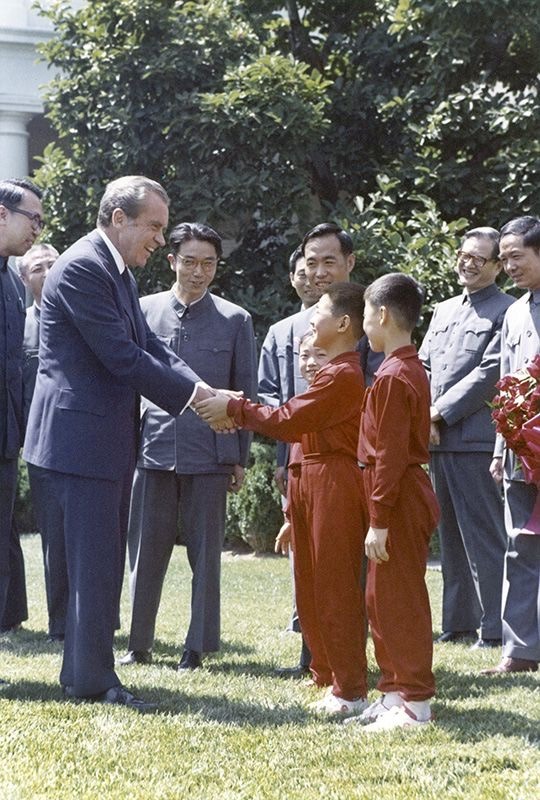
Jet Li would not be groomed as Chan was, to carry on Bruce Lee’s legacy. Too much time had passed and the industry had moved on from Bruce-sploitation and the legacy of Enter the Dragon. When Li first emerged in the 1986 film Shaolin Temple, his Northern Wushu and Tai Chi background was evident in every move, every trap, every aerial spinning kick. His fighting and performing style harkened back to old-school Kung Fu films by Shaw Brothers like Five Venoms and (bla).
…
The storyline of a typical Jet Li film goes something like this: A guy from mainland China (cop, soldier, fill in the blank) is tasked with the responsibility of protecting someone or exacting revenge for a dead master. He goes to Hong Kong, Japan or America, where his upstanding and honorable values are called into question by his new surroundings. There’s a girl, a villain, and much flying of fists and feet until finally the hero returns to China, happy to be home (in The Defender, he is killed and his body goes back to China).
After a few years as a supporting, utility player, Jet Li got the role of a lifetime playing Wong in Once Upon A Time in China. The film, directed by Tsui Hark, was a retro/throwback style historical epic with sharp cinematography and high-flying wire assisted wushu fight choreography and stunts. It was a leap forward for Hong Kong film, and spawned 3 sequels with Li reprising the main role. The films that followed could be described as Jet Li’s Hong Kong period. Fist of Legend, The Defender (also titled Bodyguard from Beijing), The Enforcer, Meltdown, Hitman, Tai Chi Master, Swordsman series. The list goes on.
Some of these movies showcased Li’s martial arts skills better than others. Sometimes he had guns, like Chow Yun Fat in Hard Boiled. Sometimes he had a kid sidekick or a love interest. One thing is for sure - playing in a Hong Kong action movie in the 90’s was not for the faint if heart. Cut-rate action techniques and low-budgets loaned themselves to accidents. The fighting was often full-contact. Actors could end up with a face full of glass from explosions. Still, the Beijing Wushu prodigy found his place amongst other martial artists like Donnie Yen and Michelle Yeoh, churning out epics, gangster films and cop dramas for audiences in Hong Kong (now hurtling towards its handover to the mainland) as well as the rest of Asia and beyond.

The only unfortunate aspect of Jet Li’s Chinese catalogue lies in the poor production values of most of these films. The overdubbed English is poorly translated, the action has a cartoonish quality and the characters are usually stock and cheesy. In other words, they are typical ‘Chop-Socky’ Kung Fu films made in the style of Bruce Lee’s catalogue, before the technical achievements of later films like Crouching Tiger, Hideen Dragon and Iron Monkey. There are some clear exceptions, such as the Once Upon a Time in China series, expertly directed by Tsui Hark and featuring another Kung Fu prodigy, Donnie Yen.
Because they were made before the age of DVD and HD, Li’s films could only be seen by Western audiences in rare Chinatown screenings in a few major cities. In the late 1990’s a new pop culture trend would change this pattern, and the trajectory of Li’s career – catapulting the Wushu prodigy from China to the United States. When Wu-Tang Clan first arrived on the American hip-hop scene in 1993, no one was prepared. Their albums were soundscapes comprised of hard-hitting verses, skits, and samples from Kung Fu and martial arts films. Along with Nas, DMX and others, Wu-Tang popularized Jet Li’s films by referencing him directly in their music. Li noticed, and his late 90’s output reflected this unlikely alliance. Black Mask, Romeo Must Die, and Cradle 2 the Grave featured Li’s action sequences cut to high-energy hip-hop. The films were successful, proving that Jet Li’s Wushu could be imported to the West.
Like Jackie Chan, Jet Li’s late 90’s crossover into Hollywood films was inevitable. It was a career move probably not based on financial need (he was already wealthy), but more based on the fact that he had outgrown the Hong Kong film scene. After his role in Lethal Weapon 4, he starred in a string of ambitious but fairly crappy vehicles like Romeo Must Die, Kiss of the Dragon, and Cradle 2 the Grave. These films, though largely panned by critics, served the purpose of greater exposure to US audiences and access to directors and filmmaker
In 2006, Jet Li announced his retirement from martial arts movies. The final entries into Jet Li’s martial arts catalogue, all made around this time, are easily the best. Hero, Unleashed, and Fearless are examples of bigger-budget Jet Li, not so different from his Chinese films but with an emphasis on acting and emotional content.
Hero is an epic historical tale in the style of Crouching Tiger, Hidden Dragon. In the film Li plays Nameless, an assassin tasked by an Emperor to eliminate those warriors perceived as threats to his his throne. Filmed in wild and beautiful colors with flawless cinematography, Hero is an example of contemporary Chinese cinema, and how much technical ground has been gained in the past 15 years. The film has been hopelessly replicated and borrowed from since its release in 2002, mostly due to its historical accuracy, dark tone and operatic fight sequences. It was at the time the most expensive mainland Chinese film ever made, and sits at the beginning of a trio of martial arts films by director Zhang Zimou, who before Hero was mostly known in art house circles for his dramatic collaborations with actress Gong Li.
The casting of Hero was an eclectic mix of non-martial artists and experts, with Jet Li (the mainland’s biggest star) in perhaps his biggest starring role to date. Donnie Yen, who at that time was still a supporting player, was brought in for the first fight scene. Maggie Cheung and Tony Leung, coming off the huge success of Wong Kar Wai’s In The Mood For Love, played the feuding lovers Broken Sword and Flying Snow. And Crouching Tiger’s Ziyi Zhang played Moon, the loyal servant. Leung and Cheung were both veteran Hong Kong actors, neither one from strictly martial arts but with 20 years of experience in all genres. Zhang came from a ballet background, and though she had a breakthrough performance in a Crouching Tiger, her martial arts skills were limited. Jet Li recognized her talent and mentored her on set, and joked about his short legs being the reason for his never trying ballet. It made sense for Li to reach out to the younger Zhang, also from the mainland and twenty years his junior. For so long he himself had been the young Wushu prodigy, but now at over 40 years old he was sliding into an elder-statesman role.
The action sequences in Hero used wires extensively - not just as a tool to exaggerate aerial jumps and spins but to make the characters fly and soar the air, dreamlike and surreal. This deliberate wire choreography may have been influenced by The Matrix and Crouching Tiger, but Hero has its own sort of Cecil B DeMille outrageousness to it that is totally out of balance with the serious tone. In fact, Hero is almost weighed down by its own sense of gravity, and is sometimes unintentionally funny when it’s adding more and more layers to each action sequence. (Arrows). It is here that Jet Li is the films saving grace. His sense of form, toughness and his skill not just as a martial artist but as an actor corrects the balance. When Li extends both arms in front of his face and slides his sword back into its sheath with a resounding and satisfying ‘click’, the film resets itself and we, the audience are given a break from the proceedings.
Unleashed raises a poignant question: can a man who has been reduced to an animal find salvation? In this film Jet Li plays Danny, a childlike soul with violent tendencies, trained since childhood to fight and kill on demand. His aggression is symbolized by a metal collar, which is controlled by his brutal ‘master’. Li is passive until the collar comes off, at which time he becomes an attack dog, dispatching his opponents in a flying, screaming rage. Unleashed is pure pulp, but it is elevated by the presence of Morgan Freeman (as Danny’s kind savior), and by Jet Li’s performance. Danny is a kid, full of wonder and innocence, but unable to escape the violence that has defined his existence. Li plays it with subtle, quiet emotion and dignity. The action in Unleashed is as usual exciting and well mounted, choreographed by longtime collaborator Yuen Woo Ping. There are even some darkly funny moments, like when Danny kills an opponent with one poke to the Adam’s apple. Yikes.
Fearless is an atypical Chinese martial arts film, because it shows the hero as lacking virtue (at least for the first half of the film). Li plays Huo Yuanjia, Godfather of Wushu and undefeated champion of Tianjin. After murdering a rival in the ring, the rival’s disciple takes revenge and kills Huo’s family. In his grief, Huo goes into exile and lives amongst simple farmers. Finally he returns home, humbled but also disgusted by the imperialist influx of foreigners taking over China. He begins to fight again, but this time for the honor and reputation of China – essentially for China’s place in the world. His final fight before dying from poisoned tea is against Tanaka, a Japanese samurai. It is worth noting that the Japanese occupation is a common theme amongst Chinese and Korean films. Both countries suffered under Japan at different times, and in the world of Fist of Legend and Fearless (two parts of the same story) the scars are still fresh. Fearless is actually titled Jet Li’s Fearless, and this film finds the actor back in his comfort zone of pure Wushu action and Chinese history. Where in Fist of Legend he reprised Bruce Lee’s performance in Fist of Fury as Chen Zheng, student of Huo Yuanjia and avenger of his master’s death, Li gets to play the master himself. Fearless is a mainland production, not as artsy as Hero and more in the vein of Once Upon a Time in China.
In the wake of Bruce Lee’s untimely death, the martial arts world was fractured. In the West, Karate was gaining speed and this popularity gave actors like Chuck Norris (a contemporary of Lee’s) and Jean-Claude Van Damme
It would seem the sun has set on Jet Li’s career. He left his audience wanting more, and with Disney hinting that he might return to his martial arts roots in Mulan, there may be more to see. In his personal life, Li occupies the rare position of the a mainland Chinese with wealth, who, now living in Singapore, is somewhat beyond the reach of the communist government. As a devout a Buddhist he has in fact visited the Dalai Lama (while making sure to voice his belief in a united China). He
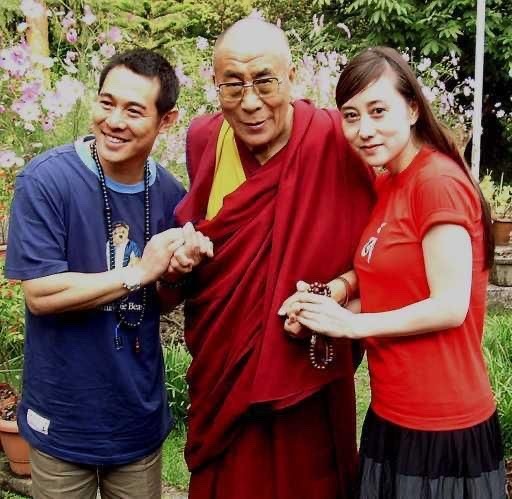
So, the question remains. What is your favourite Jet Li movie? And why does Jet Li Matter? In the opinion of this humble critic, Jet Li Matters because China matters. Mainland China needed a hero during times of extreme transition, when the Western idea of the Middle Kingdom was that it was a place that manufactured plastic trinkets. Audiences got used to Jet Li, Michelle Yeoh, and yes, Jackie Chan - as the heroes of Shao Lin or daring Beijing Police detectives, fighting their way through low-budget films made by an industry trying to keep up with the world, yet not afraid to have some fun in the moment. I still have only seen a handful of the original Jet Li movies, and so my perception of his work is top-heavy, weighed down by the performances from the end of a unique and amazing career. But what performances they are: Danny the Dog sitting next to Morgan Freeman at the piano, trying to find the courage to say his own name. Nameless and Flying Snow deflecting a sea of arrows with their swords, weightless in the air above a temple. And finally Huo Yuanjia, in the last moments of his life and with poison coursing through his veins, finishing his battle against Tanaka, Japan, Imperialist Britain, and himself. Jet Li Matters.

10 notes
·
View notes
Photo

The Legend of the 52 Blocks
I don’t know how I first heard about the 52 Blocks. Like much of New York City’s urban mythology—such as the Decepticons gang, the tunnels under Alphabet City, or the albino alligators and alligator-sized rats in the sewers—the legendary hand-to-hand combat style seemed to always hover just outside my conscious knowledge, a whisper from an unclear direction.
Certainly, though, I heard references to the 52 scattered in lyrics by rappers such as Nas protégé Nature and Wu Tang affiliate Killa Sin. The Wu-Tang Clan, in particular, seems to have an affinity for the 52. GZA, Ghostface Killah, Method Man, and various Killa Bee affiliates have all rhymed about the 52. The most memorable lyric about the 52 is probably Meth’s line from his and Redman’s “1,2,1,2”: “52 cops/ Can’t withstand the 52 Blocks/ Unless they bust like 52 shots.”
While working as a night security guard in Manhattan several years ago, I got into a conversation with a guy on the maintenance crew. The man bragged about the various fighting styles he’d studied in his lifetime, swinging his mop handle like a Japanese bō. Considering that he had spent his youth in a reform school in the Rockaways in the ‘70s, and was ostensibly an expert in various fighting forms, I asked him if he knew anything about the 52 Blocks.
“52 Blocks?” he sneered. “That’s ghetto shit. It’s nothing.”
A few minutes later, a buddy of mine who was also on the maintenance crew came upstairs. He was less of a martial arts aficionado, but was a tough guy and had spent some time locked upstate in the ‘90s, so I asked him the same question.
“Yeah.” he said. A smile spread across his face. “Yeah.” He quickly directed me to bring up YouTube on the security computer and search for round five of Judah vs. Mayweather. He knew the exact round of the fight off the top of his head. Chapter and verse. We watched the clip in silence. Mayweather dominates for the first couple minutes, landing several punches, and driving Zab Judah into the corner. Then, a switch flips, and Judah steps forward into the center of the ring. He pulls his elbows in tight, and his arms pivot back and forth across his face like a butterfly flapping its wings.
“You tell me what this is,” an announcer says in disbelief. Mayweather steps backwards—his infamous cockiness drained away—and Judah lands a righteous combination. So this was the 52 Blocks. It was something after all. And it was beautiful.
+++
Even the name of 52 Blocks is shrouded in mystery. Some say it describes a catalogue of individual moves with fanciful names like the “skull and crossbones.” Others dismiss this, and say that the name is a metaphor for a general style, coming from the game of “52 pickup,” where cards are allowed to fall where they may. Still others say that that the “block” in question is a specific cellblock. Indeed, an alternate name for the 52 is “the Comstock Shuffle,” a reference to The Great Meadow Correctional Facility in Comstock, New York.
Whether it’s 52 Blocks or Comstock, the term refers to a purported codified New York prison system-specific style of Jail House Boxing, aka Jail House Rock. This is held in contrast to related styles in other prison systems, like New Jersey and Pennsylvania, which are rumored to vary, be less codified, and go by different names. The moves themselves supposedly reflect the prison environment. The idea is that the tight stances, lack of far-ranging movement, and emphasis on survival and defense were designed to function in in the confines of a prison cell than a ring. Rumors abound online about a predatory gay 52 Blocks prison master named Mother Dear—and the authoritative Martial Arts of the World: An Encyclopedia even implies that he originated the style himself at Rikers. There is no record of this man’s actual identity.
The first reference in print to this type of fighting style apparently came in a 1974 issue of Black Belt magazine, in a feature on prison karate. Most of the article focuses on the clandestine practice of traditional karate in prisons in New York State and elsewhere, but the conclusion focuses on the more interesting “In House Arts.” Black Belt treats the prison fighting styles as “impromptu” variations on hand-to-hand combat styles used by incarcerated military veterans, and refers to them by facility-specific names, such as “Coxsackie variation” and “Comstock style.”
Amazingly, the afroed-man photographed demonstrating the Comstock style is Miguel Piñero, the famous poet and playwright of the Nuyorican arts movement. Black Belt could not have found a more appropriate model. In his, “A Lower East Side Poem,” Piñero describes himself as, “a street fighting man.” He goes on to explain that he is, “a dweller of prison time/ a cancer of Rockefeller's ghettocide/ this concrete tomb is my home/ to belong to survive you gotta be strong.”
The first direct journalistic reference to 52 Blocks does not seem to have come until the late date of 1999, though, in Douglas Century’s Street Kingdom: Five Years Inside the Franklin Avenue Posse, an immersive account of a Crown Heights gang in the early ‘90s. Century followed up two years later with an eye-opening article about the 52 Blocks in the recently-shuttered fashion magazine, Details. In his book, Century describes “fifty-two hand-blocks” as “a style of hand-to-hand combat developed in the New York State Penal system and widely practiced amongst gang members on the streets of Brooklyn in the ‘70s and ‘80s.” This is as good a definition as any (though some folks from the Bronx or Harlem might object to the geographic specificity). In the Details article, Century quotes Dennis Newsome, a well-known Capoeira master and martial arts scholar, providing his own definition of the 52 Blocks: “Basically it’s an artistic butt-whuppin’ … It’s just part of Black aesthetics.” Newsome goes on to argue that the racially-segregated nature of prison meant that only African American inmates learned the style.
Lore has it that the 52 Blocks worked its way down from the prisons to the streets in the ‘70s. This is plausible; street style has always reflected prison culture, and moves that would work in the confines of prisons would work just as well in the confines of the similarly-designed housing projects which had come to dominate New York City’s ghettos in the era of urban renewal. Because any effective fighting style would essentially be contraband, an illicit weapon smuggled in and out of prison, it would have had to remain underground. Whether it referred to legend or fact, the name 52 Blocks was restricted to argot. This secrecy is part of what makes it so difficult to trace or verify much of this history.
Through a shared association with the prison system, the 52 Blocks came to be connected in many people’s minds with the self-mythologizing Nation of Gods and Earths, more commonly known as the Five Percenters. The history of the Five Percenters is too complex to get into here, but it is a fascinating movement which was founded by a former Nation of Islam minister named Clarence 13X, aka Father Allah, in Harlem in the ‘60s. The Five Percenters’ unique approach to language has had a profound impact on Hip Hop, and modern American slang.
The Five Percenter lessons—themselves an enumerated code of arcane knowledge often learned in prison—could be seen as a mental parallel to the 52 Blocks, just as many Eastern practices have both a spiritual and physical aspect. In his book, Tao of 52, self-declared expert Diallo Frazier writes: “52 was called God Blocks because in the science of Supreme math, the number 7 is the number of GOD. When you add 5 and 2 you get 7 …” Narratives of receiving esoteric transmission of religious and martial instruction behind bars have a strong appeal for many people have been incarcerated, as they allow the years spent in prison to be viewed as time spent gaining knowledge, rather than simply wasted.
+++
In the early 1970s, perceptions of Asian martial arts began to influence New York street culture through the popular imported Kung Fu movies. Aficionados had long traveled to movie theatres on Canal Street in Chinatown, but the explosion of martial arts film screenings in midtown meant that a wider, non-Asian audience was exposed to the genre. A 1974 article in the film journal Cineaste proclaimed:
In a little more than two years, kung fu (also known as Chinese boxing), the centuries-old Chinese martial art, has caught the fancy of the American public and literally become the ‘fist of fury.’
As the 2013 documentary The Black Kungfu Experience depicts, some African American fans of Kung Fu movies were inspired to actually train in Chinese and Japanese martial arts. Ron Van Clief, a Brooklyn native, became a martial arts champion after surviving a lynching down south in the early ‘60s, and serving in combat as a Marine in the Vietnam War. He was given the name “The Black Dragon” by none other than Bruce Lee, and eventually moved to Hong Kong to star in a plethora of Kung Fu movies. These movies, in turn, inspired a whole new generation of African American martial arts practitioners.
Van Clief was the fight choreographer for the 1985 Berry Gordy-produced film, The Last Dragon. The Last Dragon, which features a showdown between two black martial arts experts in Harlem, represented the confluence of Kung Fu cinema and New York street culture. Jim Jarmusch would build on the trope fifteen years later, in Ghost Dog, a movie scored by Wu Tang’s leader, RZA. Considering that The Wu-Tang Clan’s imagery draws so heavily from both Five Percenters and Kung Fu movies, it’s no surprise that their lyrics contain so many 52 Blocks references.
The influence of film does not mean that the ‘70s martial arts trend was solely about play acting; street gangs like the Black Spades, the Nomads, and the Ghetto Brothers were actively engaging in hand-to-hand combat. Examples of this can be found in the excellent recent documentary, Rubble Kings, which chronicles the events leading up to the 1971 Hoe Avenue gang truce in the South Bronx. The film features an influential figure named “Karate Charlie” Suarez. Suarez—a Marine-turned-gang leader-turned-activist-turned-martial arts instructor—literally made a name for himself as a karate practitioner, and inspired a myriad of imitators.
+++
Many 52 Blocks proponents argue that the true inspiration for the form does not come from Asia, but from Africa. 52 Blocks scholar Daniel Marks, who first learned of the form from street savvy recruits while in the Army, refers in a brief monograph to the southern African American fighting style of “Knocking and Kicking.” Frazier similarly connects Jail House Rock back to a “Virginia Scufflin” boxing style practiced by slaves in the 1800s. The existence of enslaved bare knuckle boxers—like the famous Tom Molineaux—who were forced to fight for their masters’ entertainment, is documented in other sources, including the foundational early-1800s prize fighting account, Boxiana. Marks and Frazier both connect Southern African American fighting styles back to African martial arts, such as Hausa Boxing (also known as Dambe) in Nigeria.
Within the martial arts community, there are many detractors who question if the 52 Blocks even exists at all, let alone possesses a history stretching back centuries. Considering that martial arts is a field filled with both Orientalist frauds and blustering bravado, and that there is so little hard evidence on the history of the 52 Blocks, some measure of skepticism is certainly warranted. That being said, much of the derision for the 52 Blocks goes well beyond careful critical appraisal. A typical attack is articulated by the right-wing writer Phil Elmore:
the system simply doesn’t exist […] we are asked to believe that a people sold into slavery and shipped across the ocean to serve as slaves in the United States somehow managed to transmit the coherent body of a complex, technically diverse martial arts system to their children, their children’s children, and their children for generations, all under the watchful eye of slave owners who would not be eager to have their property learning to fight.
Elmore’s essentially racist argument not only dismisses the 52, but the very idea that African American culture builds on traditions brought over from Africa. Apparently the man has never heard of blues music, or any other African Diaspora art form. And if he doesn’t believe that martial organization could happen under “the watchful eye of slave owners,” then someone should tell him about Nat Turner.
+++
The crack epidemic of the late ‘80s and early ‘90s brought an unprecedented level of violence to the streets of America’s cities. During this era, hand-to-hand street fighting gave way to gun violence. Those who posit that the 52 Blocks was a tradition passed down through generations point to this disruptive historical moment as the end of the form’s practical use and transmission. In the song “Cold World,” GZA raps about the inefficacy of the 52 Blocks in a burgeoning gun culture: “But with iron on the sides, thugs took no excuses/ Therefore, your fifty-two hand blocks was useless.”
As the 52 Blocks became a relic of the past—historical or mythic—some people began to preserve and honor it as part of African American heritage and culture. Constellation 52 Global, a group which includes Marks and Kawaun Adon Akhenoten7 (aka “Big K” of Street Kingdom fame), works to document and perpetuate the tradition. Marks writes that he values the 52 Blocks, “as a testament of our struggle as Black people in the Diaspora fighting for equality.”
The idea of the 52 Blocks has also gradually taken more of a presence in sports, entertainment, and popular culture. Some boxing fans speculate that in addition to Zab Judah, other boxers like Mike Tyson may have incorporated elements of the 52 into their fighting styles. This theory is rooted in the fact that Tyson received much of his fighting education in the streets of Brooklyn and in a New York State juvenile detention facility. After hearing tell of the form’s fabled efficacy, some martial arts students are seeking to learn the 52 Blocks in more formal settings. This phenomenon was mentioned in a 2009 New York Times article which, in addition to Marks and Akhenoten7, focused on Lyte Burly, a trainer who teaches a version of the 52 Blocks as a business. The Times article also discussed a meeting between Marks and UFC Champion Rashad Evans, and Evans’ interest in 52 Blocks techniques.
The 52 Blocks is finding its place on the screen as well, just as Kung Fu once did. Because of its speed and flash, the 52 Blocks is made for the medium. Indeed, many people now receive their first glimpse of the 52 in YouTube videos, just as I did. Strangely, the first mainstream use of 52 Blocks-style moves was by Mel Gibson in the 1987 film Lethal Weapon. The Australian learned his moves from Dennis Newsome. More recently, the 52 Blocks mythology plays a prominent role in the BET series Gun Hill. Larenz Tate’s character, Bird, is an ex-convict posing as a law enforcement officer, so his knowledge of the 52 is somewhat logical to the plot. Though Tate’s fighting technique—coordinated by Diallo Frazier—may very well be flash designed for TV, rather than an authentic reflection of a prison and street fighting tradition, its central use in the narrative demonstrates the continuing popular appeal of the legend of the 52 Blocks, two decades after the Wu-Tang era.
Despite the lights and cameras, the 52 Blocks remains, in its essence, an art form of bare hands, operating behind concrete and steel. Not too long ago, my girlfriend’s work took her to Harlem early in the morning, just after dawn. Passing through Marcus Garvey Park, she saw a lone man in his fifties—with the weathered look of an ex-con—training inside the playground jungle gym, down the hill from the old fire tower. His half-century-old arms flashed in front of his face, cutting through the morning air.
“Was that 52 Blocks?” she asked me when she got home. “It was like nothing else I’ve ever seen.”
#52 blocks#mother dear#ricker island#new york city#martial arts#fightland#vice#miguel piñero#miguel pinero#dennis newsome#tao of 52#diallo frazier#ron van clief#daniel marks#jail house rock#virginia scufflin#virginia scufflers#hausa boxing#dambe#kawaun adon akhenoten7#zab judah#gun hill#larenz tate#tom molineaux
2 notes
·
View notes
Text
London Film Festival 2017 or: the real world sucks just watch films for 2 weeks
I feel like I’ve spent my entire student loan seeing things at the London Film Festival, which ran over the last few weeks.
Was worth it.
#1: MANIFESTO, directed by Julian Rosefeldt, 90 mins
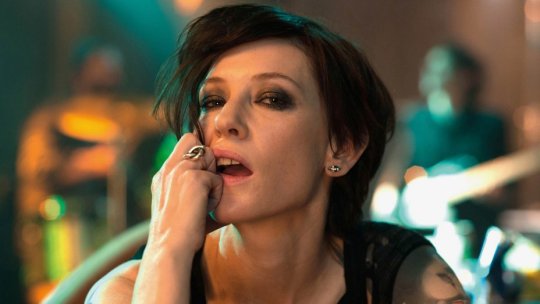
- Originally a critically acclaimed multi-screen video installation in which Cate Blanchett plays 13 different characters, ranging from a school teacher to a homeless man, performing artist’s manifestos in 13 different scenarios. Part of the financing deal was Rosefeldt had to cut a 90 minute, linear version of the piece for a cinematic setting. Provides some super interesting results.
- Clearly a translation, but an interesting one. Making the viewer watch it beginning to end highlights the flaws in that translation from installation to cinematic setting (can get too much to digest sometimes), but when it works, it *really* works.
- More than anything, made me think about the cinema as a space- question the realms of it and what we’re putting on a big screen.
- CATE FUCKING BLANCHETT!!!! i am convinced no one could have pulled this off like she did. She’s running on adrenaline and pure bravery. She makes interesting choices at every twist and turn. A masterclass.
- You HAVE to be fully, super awake and willing to give this your full attention from the start. It’s slow and beautiful and wonderful... but it is slow.
- Genre hops from scenario to scenario perfectly... from Clio Banard-esque social realism to Rachel Maclean-like cartoonish sci-fi.
- Some things Julian Rosefeldt and Cate Blanchett said in the talk afterwards that seemed interesting (lots of paraphrasing):
- The white cube is a prison... talking to people who already agree with you... Cinema has a bigger audience with more coincidental audience members- Cate Blanchett fans from the new Thor film mayyyy see this...
- Ask ‘would anyone be interested in seeing this?’, NOT ‘will anyone like it?’
- ‘If I could say what everything means, I should stop doing art.’
- ‘Your brain attends to things differently when watched linearly’
- ‘Art’s role isn’t educative- it’s provocative.’
4/5.
Opens November 24th.
#2: BATTLE OF THE SEXES, directed by Jonathan Dayton & Valarie Faris, 121 mins
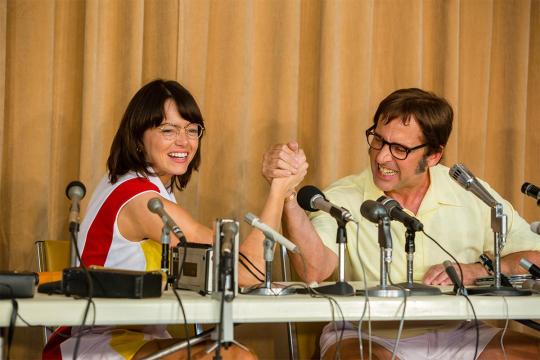
- True story of 1973 tennis match between Billie Jean King and Bobby Riggs.
- Rousing good fun. A real crowd pleaser. I saw the Gala screening at the Odeon in Leicester Square... the perfect way to watch- with lots of people, all feeling the Hollywood-ised, over-dramatised, over-sentimental beats together... and super enjoying it.
- It’s less subtle than MOTHER! (2017) about what it’s saying, but has a shining, naive optimism to it that you just kind of have to smile at.
- Emma Stone and Steve Carrell as King and Riggs hold all the moving pieces together. They add weight to potentially weightless, throw-away moments.
- All supporting performances great too- Sarah Silverman the MVP. Andrea Riseborough continues to be a chameleon, effortlessly embodying everything about who she’s playing, and it doesn’t even look like she’s trying. And hey! it’s super nice to Martha MacIsaac back on screen with Emma Stone! Their first time together on screen since Superbad (2007).
- The romance between Billie Jean King and Riseborough’s character Marilyn Barnett is easily the most engaging aspect of the film. The only time it leaves Hollywood feel-good territory. Something so magical watching them drive the sun-kissed California roads together listening to ‘Rocket Man’.
3.5/5.
Opens November 24th.
#3: OUR TIME WILL COME, directed by Ann Hui, 130 mins

- 1940s Japanese occupied Hong Kong. Fang Lan, a young primary school teacher, gets involved in the resistance movement and rises to become a legendary figure in the fight for freedom.
- STAKES. Really, really gets how to set up stakes for the characters. It’s a film about all the small things, the little fights in a war that will eventually add up to victory. Not assassinating all the leaders of the opposing army, just stealing a map that’s been put in a bin in an enemy outpost, hoping perhaps it helps. It’s a section of a larger painting. EVERYTHING feels dangerous. Every character is in danger at every moment, and is always punished for making the smallest mistake. Gives the sense that the oppressive State is ALWAYS watching. It demands you never become de-sensitised to the violence which leads to that immediate sense of danger.
- Had a restrained cheapness to it which I actually quite liked. Every now and then you get some goofy looking VFXs and some badly dubbed ADR, but the restraint keeps everything feeling grounded and human.
- Runs at it’s own pace/abides by it’s own structure, which may be too slow/anti-climactic for some, but I liked it for the most part. Playing by it’s own rules and truly being what it wanted to be... which sometimes worked and sometimes didn’t.
- The moments it steps out of the main story and does a docu-drama thing... just why? Came across so half-baked. Similar to the 3 time scales in Nolan’s Dunkirk (2017), there was never really a moment of release, an ‘oh! that’s a really interesting decision to do that!’ moment. Just left me kind of baffled to why?
- Genuine moments of magic that I wouldn’t dream of spoiling. Seriously some of the most creative, inspired scenes I’ve ever seen.
- Some guy (wearing a BFI lanyard??) sitting a few seats away kept repeating phrases from the film outloud in a strange voice? Why would you do this??
3.5/5.
UK release date unknown, probably some time in 2018.
#4: LAST FLAG FLYING, directed by Richard Linklater, 124 mins

- 2003. A Vietnam veteran recruits his two oldest buddies, who he served with, to accompany him on a journey no one should ever have to take.
- Richard Linklater continues to prove he can effortless hop between genres like no one else, but the film is still packed full with ideas he’s played with before.
- Performances are uniformly and predictably excellent. Bryan Cranston’s Sal is like the crazy friend of your parents who’d show up every few years in a beaten up old car and give you a pack of smokes for your birthday. Laurence Fishburne says ‘praise Jesus’ every 2 minutes and it’s amazing. Steve Carrell has a quiet dignity to him that’s really special.
- Linklater knows exactly what he’s doing with his camera (water is wet), but it kills me to say it felt visually bland like his films never have.
- Features the best ‘characters uncontrollably laughing’ scene since The Intouchables (2011).
4/5.
Opens 3rd November.
#5: THOROUGHBREDS, directed by Cory Finley, 90 minutes
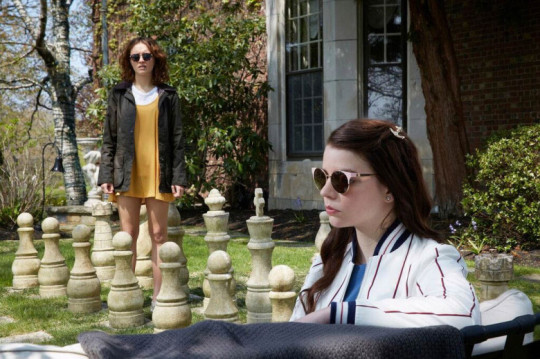
- Two rich-kids from small town Connecticut hatch a plan together.
- Ugh, just.... what’s the point? It’s not boring, but every frame just had me thinking ‘why is this happening?’ So disappointingly transparent. I could see the director sitting planning the movements and cuts. Painfully ‘first-feature’ like. Should have been a rich, twisted delight, but was just so vapid and empty.
- Olivia Cooke is one of my favourite rising actresses. Has one of my favourite performances ever as Rachel in Me and Earl and The Dying Girl (2015), and dammit I cry every time I watch her in it. In this... she does a good job with what she’s given. Anya Taylor-Joy is fun too.
- Badly costumed?? So rarely actively think that.
- Music was fun but as empty and ultimately weightless as the rest of the film. Felt like an afterthought to spice things up.
- Anton Yelchin’s character was the only person in the whole film I cared about. Brings a greyness to such a black and white film. What a fucking loss to the world man.
2/5.
Opens 9th March, 2018.
#6: CALL ME BY YOUR NAME, directed by Luca Guadagnino, 130 minutes

- Somewhere in Northern Italy, Summer 1983, Elio’s life changes.
- Sun-drenched Europe, the smell of warmth and twirling cigarette smoke, deep blue sky- pure, breakfast with a glass of apricot juice and an espresso, the sound of bike spokes spinning lazily.
I wish I could live with these people.
‘Later.’
4.5/5.
Opens 27th October.
#7: THE SHAPE OF WATER, directed by Guillermo del Toro, 119 minutes
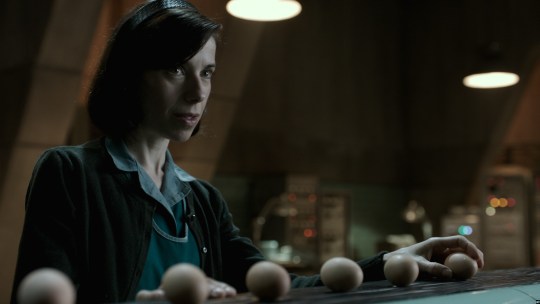
- 1962, Cold War America. A mute cleaner at a government research facility, Elisa, strikes up an unlikely relationship.
- Del Toro just *knows* what he’s doing. It’s all so effortlessly confident. So rich and fulfilled. Such commitment to everything.
- The first half is fantastical and brilliant. The second.... loses something. Still has moments of genius, but too much plot. Fizzles out in a disappointing way.
- Reminded me in a lot of ways of Edgar Wright’s Baby Driver (2017). Both are clearly projects the directors have wanted to make for a while, both have amazing first acts then don’t quite know what do with themselves. However, Shape has pure heart that carries it through any rough patches. It feels like it’s actually about something, not just an exercise in style for the director.
3.8/5.
Opens 16th February, 2018.
#8: LUCKY, directed by John Carroll Lynch, 88 minutes

- The swan song of Harry Dean Stanton. A 90-year old atheist’s life as he wanders his desert town, drinking, smoking and speaking to old friends.
- Pure magic all the way through. Plays at exactly the speed and tone it wants to play at.
- One of the most engaging ‘but nothing happens!!’ films I’ve ever seen.
- Everyone hits perfectly. David Lynch appears playing a character that has a pet tortoise called President Roosevelt for fuck sake.
- Bleak, but finds immense joy in that bleakness. Whenever I feel like I’m about to face the void- I will remember the smile of Harry Dean Stanton.
- 3.5/5.
Opens January 2018.
#9: BAD GENIUS, directed by Nattawut Poonpiriya, 130 minutes

- Thai Heist-Thriller about students cheating their exams.
- WHAT A FUCKING RIDE!! More stakes in this than most ‘end of the world’ superhero movies.
- The filmmaking is so good it makes you forget plausibility is sometimes being pushed. Amazing set-pieces. Expertly choreographed.
- Whimsical, but painful and genuinely emotional when it needs to be.
- Every character is so rich and textured in their own way. So fully realised.
- Why do the last 2 minutes of this film exist??
- 2 years time, there will almost certainly be an American remake of this... and it’ll suck so hard.
- SEE THIS FILM. SEE THIS FILM. SEE THIS FILM. SEE THIS FILM.
4/5.
Opens some time in 2018.
#10: THE FLORIDA PROJECT, directed by Sean Baker, 115 minutes
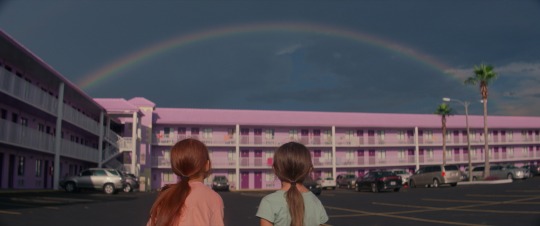
- In the shadow of Disney World, 6 year-old Moonee and her friends spend the summer playing around the Motels they live in.
- Pastel bright colours. Every person has survived a storm. Explore the wasteland of failed corporate America. Become a child again.
- Baker continues to masterfully blend fiction with reality, wrapping one in the other.
- Doesn’t ask you to like the characters. Doesn’t need to. One of the very best films of the year.
4.5/5.
Opens 10th November.
#11: INGRID GOES WEST, directed by Matt Spicer, 98 minutes
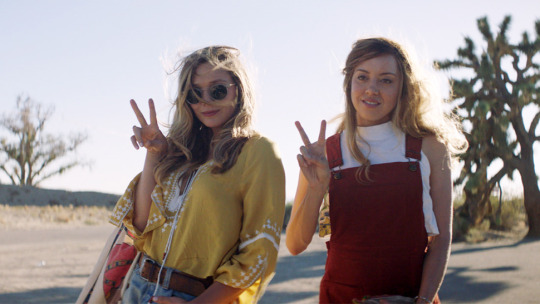
- Ingrid moves to California to become Instagram famous.
- An enjoyable, fun Saturday night film.
- Elisabeth Olsen as ‘photographer’ Taylor Sloane is note perfect. Could so easily have slept-walked through it, but didn’t. Her relationship with brother Nicky is so, so good. Idea of this Instagram famous rich girl with her crazy, pill-junkie, roid-monkey brother who she knows is terrible but loves him and is sort of as vapid as he is- just knows how to hide it better. And man, he is SO evil. Haven’t hated a character as much as I hated him in a while.
- Plaza holds it together. Her and the film trust you to realise how mentally ill she is without reminding us too much.
- 1st half is superbly played... loses it somewhere in the middle of the 2nd act but picks up again at the end.
- Music was terrible?! Suggested some weird criss-cross in tone of the film.
- I GET IT! THE INTERNET IS BAD!
3.5/5.
Opens 17th November.
#12: You Were Never Really Here, directed by Lynne Ramsey, 85 minutes

- Gulf War veteran Joe is known for the brutality he inflicts on captors of the children he’s rescuing.
- Deeply troubled. Beautiful. Precise. Scatter-brained. Focused. A violin strung too tightly, then played by a madman. How can something so stripped down and raw feel so symphonic and wholesome? I feel like I’ve been repeatedly smashed in the head with a hammer... but enjoyed it.
- Jaoquin Phoenix. Lynne Ramsey. Johnny Greenwood.
- There are things in this that will play on loop in my head for the rest of my life.
4.5/5.
Opens in early 2018.
#13: Three Billboards Outside Ebbing, Missouri, directed by Martin McDonagh, 115 minutes

- A mother takes desperate steps to pressure local law enforcement to find her daughter’s killer.
- Perfectly woven and layered characters. I fucking hate the phrase ‘the character arc’, but if I were teaching a class in it- I’d show this film.
- A film about relationships, and every relationship between every character or creature or inanimate object is perfect.
- McDonagh loves theatrical sensibilities. Nobody does grand, rich set-pieces quite like him... makes highly stylised situations feel real in the world he sets up.
- I could have watched hours more of these characters interacting.
4/5.
Opens 12th January 2018.
STRAY THOUGHTS:
- Felt spoilt in the audiences I had the pleasure of watching these films with. Always respectful.
- Every time Clare Stewart (head of festival) came on stage to present a film, I just couldn’t help but smile. Bumped into her after a screening and told her my student loan situation. I don’t think she knew what to say.
- DON’T WATCH THE TRAILERS OF ANY OF THESE FILMS. THEY SPOIL SO MANY OF THEM.
- I am consistently shocked by how enamoured I am with celebrities. Some weird conditioning in my brain. Am glad I didn’t queue up to get a picture with anyone. Saying that, this screenshot from a random interview I saw online where I’m juuuust to the left of Emma Stone will live on my wall forever.

ughhhhhh i’m a loser ughhhhh
2 notes
·
View notes
Photo










THE GLORIOUS HISTORY OF VOICE DUBBING IN HONG KONG——BY MASTER TING YU, BORN IN 1934
One of the acclaimed contemporary composers is Arvo Pärt, from Estonia. He delights us with music played by a wide range of instruments. He however said, “The human voice is the most perfect instrument of all.” Words mean more than facial expressions but it takes a human voice to infuse words with greater power. I would like to use this article to make a salute to the most respectable voice dubbing master in Hong Kong Mr. Ting Yu(丁羽) who was born in September 1934 and is still fit and cheerful.
Ting told me, “I was born in Hong Kong and lived on Prince Edward Road. My father used to be a high-level official of the customs department. He quitted government job and set up 4 hotels. His 10 kids fell asleep every night with a full belly and happy heart. Wing Fong(榮芳) Coffee Shop in Kowloon City was close to Prince Edward Road and it was a hang around place of the movie stars. There, I came to know a director Wu Pang(胡鵬) and scriptwriter Wong Fung(王風). At eighteen, I finished my high school and got no job in the backward 1950s of Hong Kong. Wu and Wong offered me the role of a eunuch in a film. As I was considered educated in those days, I worked my way up to become a production assistant and later assistant director apart from acting.”
“In the 60s, I worked in Shaw Brothers Studio and voice dubbing for films was my specialty. I was approached by Hong Kong Television Broadcasts Limited(TVB) around 1967 and they asked me to be their first Dubbing Department manager. A married man wanted stability and such stability could be traded off against my dream to be a film director. As a result, I have been enjoying my dubbing and ‘subbing’ business in a dark room from the 60s until now for over 50 years. I said ‘subbing’ because in a foreign motion picture, the actor did not speak Chinese and so I ‘acted’ for him vocally in the film.”
A successful man always feels changes and turns them as an opportunity. After working in TVB for some years, Ting finally established his own voice dubbing company in 1973 because the 1970s showed signs of upsurge in films locally made. The pleasure of a peak is when Hong Kong produced more than 300 films a year in the 90s.
Ting explained, “There were 3 causes of the economic boom of dubbing business. Chinese films were made either in the national language of Mandarin or local dialect of Cantonese used in Hong Kong. To satisfy the different market needs of the Chinese in Asia, we had to translate and dub films into either language. Also, the live recording equipment and technology of the old days were not good and any ‘Cut’ shouted by the director would stop all and the shot had to be re-done. The ‘smartest’ way was to shoot a film without voice live recording (called MOS, or Omitting Sound Recording) and to dub the film afterwards. Let me give you an example: 2 days of shooting with sound live recording could be reduced to only 6 to 7 hours when they had adopted MOS.”
“Lastly, popularity made some film stars as busy as a bee. They got no time to practise the dialogue well during shooting. They therefore used an artist of similar voice quality to dub for them at the post-production stage of the film. Jackie Chan(成龍) was one of them.”
I was in an inquisitive mood, “Master Ting, what are the different generations of dubbing artists in Hong Kong?” Ting responded, “There are basically 3 generations. In the 50s to 60s, some stars came from the North China and could not speak Cantonese. So, it was devised that another artist would stand by at the shooting location. She read the lines of the film script aloud while the star was acting and ‘lip imitating’ her, so as to satisfy the need for live recording at that time. This is the crudest form of dubbing.”
“In the 70s & 80s, we got only analog editing technology but no digital signals. In order to edit the soundtrack of a motion picture conveniently, every dubbing session was about one minute without any interruption. The dubbing artist had to memorize the lines of a script for that one minute. To make it worse, the artists in the 70s were unable to hear their own recording simultaneously with the dubbing due to technical limitations. The artists could not afford any mistake for the one minute.”
“Now, we live in a digital age. All have become too easy for a dubbing artist. He can stop and dub it again at any second. The remaining challenge is only his voice acting skills. Lack of emotion or style may be a problem for many young dubbing artists.”
I asked Ting for his past 60 years contributions to the dubbing world, what he could remember most. Ting smiled, “In the early years when we dubbed foreign films, like the Japanese ones, there was often no script provided to us. The written instructions given to us were very simple and they just told us what a scene was roughly all about. So, we just improvised the dialogues ourselves. We really had fun since we could be as creative as we wanted to be. However, we got into big trouble when the film was a detective story and every line of conversation might imply a hint solving the criminal case.”
We cannot recognize a dubbing artist’s face. It is only after hearing his or her voice that we realize who they are. Master Ting Yu is one of such unsung heroes. They were the hidden daisies among the roses and the stars which broke at the dawn in the glorious evolutions of Hong Kong Hollywood since 1940s.
#Ting Yu#Arvo Pärt#Wu Pang#Wong Fung#Shaw Brothers Studio#TVB#Wing Fong Coffee Shop#Voice Dubbing in Hong Kong#Analog#Ditigal#Omitting Sound Recording
0 notes
Note
If Karasuno members were to learn a second language, what do you think it would be?
Didn’t really think too too hard on these, I went with the first language that came to mind when I thought about the character, hope it’s what you were looking for!
Daichi: Mandarin
- Daichi’s reason is mostly practical, he knows that Mandarin is the most widely spoken language in the world, and he feels knowing it would give him an advantage in his future.
Suga: French
- I totally headcanon Suga’s mom as French. Suga never really picked up the language or wanted to learn as a kid, it wasn’t until he was in high school that he took an interest in learning French. He is also completely aware that being fluent in French, paired with his looks and charming personality, will make him even more irresistible. Boy absolutely knows that he can charm the pants off anyone he sets his eyes on.
Asahi: Spanish
- He heard a group of Spanish tourists talking one time and was completely captivated by how beautiful the language was. Not completely committed to taking classes or anything, but likes to use apps and learn some phrases now and then.
Nishinoya: Korean
- I feel like he’s totally into K-pop and as a result he started to dive deeper and deeper into Korean culture.
Tanaka: Korean
- Nishinoya had roped Tanaka into the k-pop craze with him, and the next thing he knew, his sister got into it as well. They started watching Korean variety shows together and just picked up phrases from here and there.
Ennoshita: English
- Let’s be real, he spends so much time watching and analyzing western films that without even realizing it he became pretty proficient at it.
Narita: Cantonese
- He seems like he’s into Bruce Lee/Jackie Chan/90s Hong Kong films???
Kinoshita: English
- He’s not particularly interested into learning another language. English is part of the curriculum at school, so he’d probably keep learning it.
Kageyama: none
- unless you count volleyball as a second language, he has no motivation to learn it.
Hinata: none
- His worst subject is English, and he hates studying (unless it’s got to do with volleyball), so I don’t think he’d have any interest.
Tsukishima: German
- not sure if it’s because he’s blonde, but it’s the first language that came to mind for him LOL
Yamaguchi: none
- He’s not really interested in learning another language, he’ll probably learn some German from Tsukishima. He’ll keep up with English from school, but not particularly interested in becoming fluent.
Kiyoko: Korean
- Nishinoya and Tanaka have no idea (they would lose their shit if they found out), but Kiyoko is actually a huge k-pop fan, and has been learning Korean on her own for a few years now. In fact, she’s pretty much fluent, and would have no trouble communicating if she were to go to Korea.
Yachi: English
- Yachi is interested in learning a lot of languages, but since English is already taught at school, she feels that at the very least she should be adept at it first before attempting another language.
Takeda: Japanese
- and by Japanese I mean he knows all the different dialects, and even knows old/archaic forms of Japanese. I mean, the man teaches Japanese literature.
Ukai Jr: none
- He doesn’t strike me as someone who would be interested in learning another language.
#Sawamura Daichi#Sugawara Koushi#Suga#Azumane Asahi#Nishinoya Yuu#Tanaka Ryuunosuke#Ennoshita Chikara#Narita Kazuhito#Kinoshita Hisashi#Kageyama Tobio#Hinata Shouyou#Tsukishima Kei#Yamaguchi Tadashi#Shimizu Kiyoko#Yachi Hitoka#Takeda Ittetsu#Ukai Keishin#Ukai Jr#Haikyuu!!#Haikyuu#hq#haikyuu headcanons#headcanons#haikyuu imagines#Karasuno
151 notes
·
View notes
Text
Best and Worst Things of 2016

Whew, what a lovely five month hiatus. I'm finally posting my best and worst list for the year 2016. After this post I will probably cocoon again...popping up occasionally. Mind you I am still lurking on everyone's blogs. You may see me pop in every now and then. Although I may not update it often, this blog will continue as long as I watch films and have breath! So hopefully this blog will continue to run for a very long time...albeit intermittently.
Admittedly I have seen a good number of films this past year, but I have not have an opportunity to write about them all. The reasons why are abundant. I am in my late 30s, in grad school, have a 3 year old, a husband, and a full time job. So unfortunately this year, my blog went by the wayside.
I hope you enjoy my best and worst list for 2016. Please share with me yours, agree, or disagree with me in the comments. I look forward to reconnecting with everyone.
I preface my film list by saying that I don't necessarily qualify this list as the best films of the year. They are simply the best films I HAVE seen thus far this past year. I think 2015 was a much better year at the movies. Have I mentioned that 2016 was a bad movie year?

10. The Shallows.

IT'S OKAY...NO SHARKS COME HERE.
Surfer [to Nancy]
Similar to 'Don't Breathe,' this little horror movie snuck up on me. I didn't have high expectations so I was pleasantly surprised that a movie with a plot of "Blake Lively versus a shark" was good, but it really was. That was it. That's the plot. 'Jaws' has been done before so there's no need to go there.
That said, for this film--simplicity works. Some of the best horror films have very simple plots. Lively does a surprising good job as a medical student on vacation, attempting to follow in her mother's footsteps (who recently passed away). As long as you don't take this film seriously you will enjoy it.
9. Free State of Jones.

'CAUSE YOU CANNOT OWN A CHILD OF GOD.
Moses [to Newton]
Similar to above, I enjoyed this film, but I don't necessarily qualify it as one of the best films of the year. I had such high hopes for this film because of the fascinating material, but the film's lack of focus is it's greatest hindrance. A good biopic does not have to tell the subject's whole life story or that of their descendants. The film is ultimately a biopic about Newton Knight (Matthew McConaughey), who was clearly a man ahead of his time and who led a very interesting life. His story and the story of Jones County, Mississippi is a story that has been lost to history and it's a story that should be told.
In the hands of a better writer and director--this film could have been epic. For example, the biopic 'Lincoln' focuses exclusively on a few months in the life of President Lincoln, during a very interesting time during his life (the passage of the 13th Amendment/Abolition of Slavery). Had the 'Free State of Jones' focused on one time period of Newton Knight's life, a mildly good film could have been a great one. Overall a good, yet flawed film. See my full review here.
8. Ghostbusters.
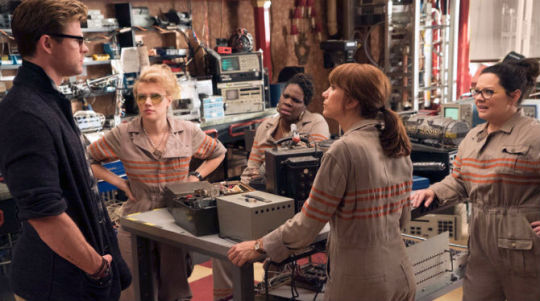
WHY AM I OPERATING THE UNTESTED NUCLEAR LASER?
Erin [to Jillian]
'Ghostbusters' 2016 is by no means one of the best films of the year. Wow, I'm saying that a lot this year. It's not a film without flaws--one of the biggest flaws was the removal of the key master/gate keeper storyline. That storyline made the original 'Ghostbusters' film genuinely scary. But I laughed so hard at this film. This film got so much heat and everyone talked so much crap about it, but it's a popcorn movie. It's not meant to be taken seriously or win awards. It's a summertime feel good flick. We don't need to read anything else into it.
Yes, the original 1984 'Ghostbusters' is a beloved film and a classic, but 'Ghostbusters' 2016 is not really a remake. It's an entirely new film with fresh characters who happen to be Ghostbusters. I had a great time watching this film with my friends! So yeah, it's one of my favorite films of 2016. I'll own the hate I get for this choice! See my full review here.
7. Allied.
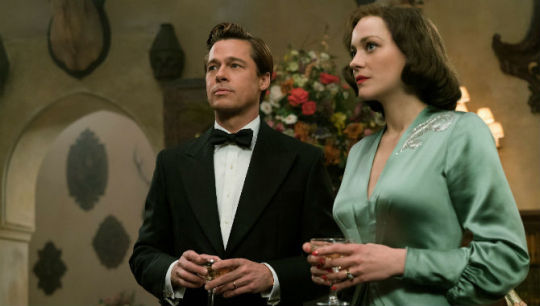
I'M VERY GOOD AT PRETENDING, MAX.
Marianne [to Max]
This movie received mixed reviews, but I enjoyed it. It was entertaining and it kept me engaged. Brad Pitt (Max Vatan) and Marion Cotilard (Marianne Beausejour) star as two spies who fall in love in Casablanca during a deadly mission. How much more romantic can that be?
Canadian spy Max Vatan. Vatan infiltrates German-held Casablanca in order to assassinate the German ambassador. He enlists the help of a French spy, Marianne Beausejour. Once they finish their mission they subsequently fall in love and return to England to continue to fight the war. From the film's trailer you can ascertain that Marianne is later accused of being a double agent. Vatan has to get to the bottom of it. If it's determined that his wife is a double agent he will have to kill her.
The film wasn't as predictable as I thought it would be, so that was a big plus. It's not necessarily a film I would see again, but it's a good date night film. My dad enjoyed the film if that gives you any indication how the film appeals to a broad audience.
My only complaint is that Hollywood needs to stop pretending that Brad Pitt is 35 years old. Heck, I'm not even 35 years old anymore and I was a young teen when Brad Pitt was a heartthrob in the 90s. Putting enough makeup on 53 year old Brad Pitt to make him look 35 is a little disconcerting every time I see it. I wish Pitt (as well as a few other A-list male actors in Hollywood--like Will Smith and Tom Cruise) would stop trying to look 25 to 30 years younger in their films. It just doesn't work. A little salt and pepper in the hair and not so much makeup would go a long way. There is nothing wrong with a good looking 50+ year old man who looks like a 50+ year old man.
Side Note: My dad is my movie partner and he's typically very naughty. He talks during the film, passes gas, and litters. He's terrible. This time was no exception. On this occasion we finally came across someone who was worse than he was. My father is hard of hearing so he asks me what happened or what someone said or he makes a comment about something happening in the film. My father views the movies as an interactive experience. Every time my father made a peep, the old man behind me would kick the seat a few seats down from me. And I mean he was kicking this seat hard. He kicked that seat during the entire film, which rattled the other seats next to it. I'm surprised I don't have whiplash. So if there was a reason to not like this film that would be it...so clearly this was a decent movie.
6. 10 Cloverfield Lane.
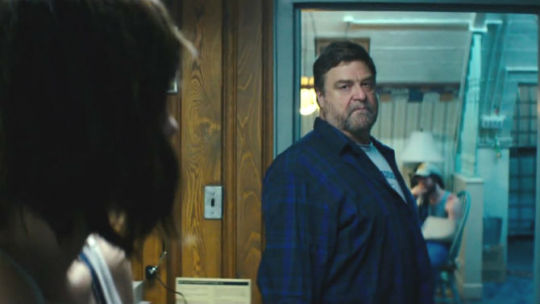
I'M ALWAYS WATCHING.
Howard [to Emmett]
Again, had this been a year other than 2016 (and perhaps if I had seen more films) this movie may not have been on my best list. Geez, 2015's list had so many wonderful little films on it...like 'Bone Tomahawk' and 'It Follows.' Neither '10 Cloverfield Lane,' 'The Shallows,' or 'Purge: Election Year' are of the same caliber, but this is where we are.
However, '10 Cloverfield Lane' is an effective thriller. As a sequel/prequel to the original 2008 'Cloverfield' film, one would expect '10 Cloverfield Lane' to "go big," but instead "it goes home." LITERALLY. It delves into the psychology of claustrophobia and paranoia. What I liked most about the film is that it unfolds as a psychological horror film, rather than a creature feature. This film is a fun, tightly woven little thriller deserving of a must see list. See my full review here.
5. Purge: Election Year.

THIS IS THE AMERICAN WAY.
Uncle Sam
I actually think this film would have landed on my best list no matter what. I loved this frightening insane film. The Purge films are my guilty pleasure. The 'Purge' films get a lot of flack. After all, these are not highbrow films, nor do they stimulate intellectual conservation. And yes these films are violent, but thankfully, writer and director James DeMonaco never crosses the line into "torture porn" territory.
The horror of the film is primarily in the minds of the participants. The tension is created in the idea of "what could happen" and less on what is actually happening. But what these films lack in critical acclaim, they more than make up for in their entertainment value. Lastly, these films are highly allegorical. The symbolism and social satire in these films only add to its charm. A must see for any horror fan who loves metaphorical films like 'Equilibrium,' THX-1138' or 'Fahrenheit 451.' See my full review here.
4. Rogue One: A Star Wars Story.

THERE'S A PROBLEM ON THE HORIZON.
THERE IS NO HORIZON.
K-2SO
The ending of this film saved it for me. 'Rogue One' is the 'Star Wars' prequel we've been waiting for. 'Rogue One' follows Jyn Erso (Felicity Jones) as the daughter of a disgraced empire scientist Galen Erso (Mads Mikkelsen). Jyn's story is about the creation of the death star and how the resistance learned of the death star's major flaws and who put it there. The film follows Jyn as she searchers for her father with the help of a merry band of outlaws. Her mission turns into a mission to save the republic.
In one fail swoop, this film shatters the need for any of the craptastic prequels of the 90s and early 2000s. It's a typical 'Star Wars' film in many ways, with regard to the action sequences, the camaraderie, and moral quandaries. Where this film breaks the mold is in its ending, which I will not spoil for you here. If I had one complaint about the film it would be the gross under use of Donnie Yen. You don't put a Hong Kong action star like Donnie Yen in the film and not properly use him.
3. Don't Breathe.
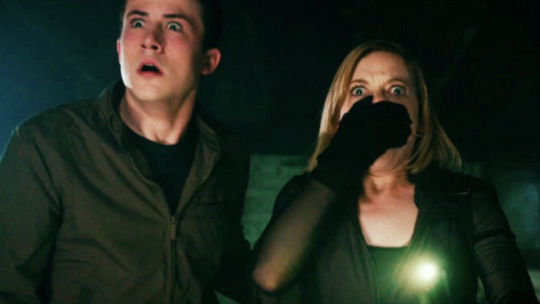
IT'S KIND OF MESSED UP TO ROB
A BLIND GUY, ISN'T IT?
Alex
This film would have landed on my best list regardless. Although I don't know if it would have been rated as high. 'Don't Breathe' was the last film I fully reviewed on this blog because it took me by surprise. I didn't know anything about it before I went to the theater, but 'Don't Breathe' is a slick little horror film, with a great cast, and a thrilling (yet unbelievable) plot. Admittedly, the film has enough plot holes to drive a truck through it, but it kept me on the edge of my seat--which is hard to do. What I liked about the film is that none of the characters are particularly likable. This is one of the few horror films in which there are no heroes.
It was such an entertaining nail bitter. The casting of the magnificent Stephen Lang cinched things for me. The film's premise is simple-- a home invasion gone wrong...and oh boy do things go wrong. See my full review here.
2. Captain America: Civil War.

THAT SHIELD DOESN'T BELONG TO YOU.
YOU DON'T DESERVE IT.
Tony Stark [to Captain America]
It's kind of sad (for other films) when a comic book film is one of the best films of the year. Seriously
Hollywood step it up. The film ran a little long, but kudos to directors Anthony and Joe Russo for creating another wonderful comic book film. DC Comics and Warner Brothers can learn a lot from this duo. The first step to ending DC Comic's madness would be to stop giving money to Zack Synder or David Ayers. Back to 'Civil War'-- this film is a little gem among comic book films.
The great thing about 'Civil War' is that it truly felt like an 'Avengers' film. 'Civil War' was the Avengers film that 'Age of Ultron' should have been. When I reviewed 'Age of Ultron' in 2015 I thought the problem was that there were too many characters to feature. Yet 'Civil War' has even more characters. The difference between 'Civil War' and 'Age of Ultron' is that 'Civil War' features Captain America at its heart and rightfully so. Whereas 'Age of Ultron' was all over the place, 'Civil War' is focused.
More credit should be given to Chris Evans and his portrayal of Captain America. It's not easy play a genuine "good guy." Evans continues to do it well. He's perhaps the best embodiment of a comic book hero since Christopher Reeve's Superman. See my full review here.
1. Arrival.

IF YOU COULD SEE YOUR WHOLE LIFE FROM
START TO FINISH, WOULD YOU CHANGE THINGS?
Dr. Louise Banks.
This film was so lovely, magical, and well-written. Most scifi films about aliens have major action stars attached with huge explosions and gun fights. So it's rare to see a non-shoot 'em up science fiction films these days, but that's just not how director Denis Villeneuve's (Sicario) rolls. With 'Sicario,' and now with 'Arrival,' Villeneuve may be my new favorite director. Villeneuve's slow, tense, methodical style carries over to his latest film 'Arrival.' Villeneuve also seems adept at directing smart scripts with female protagonists-- a rare quality in Hollywood.
'Arrival' is a muted scifi film that still manages to be exciting. It's also not linear, so things happen out of order, which add to the film's tension. I haven't seen a scifi film quite like this one. The closest example I can give is the 'The Day the Earth Stood Still.' Not the crappy Kenau Reeves version, but the original 1954 film. Another film I would compare it to would be one of my favorite films, 'Close Encounters of the Third Kind.'
'Arrival' begins where it ends with a grieving mother. We aren't quite sure who is grieving or why, but it's a sad start to a beautiful film. Oblivious to world events, linguist Louise Banks (Amy Adams) is lecturing her class when 12 alien ships land on earth. She is soon asked to join the alien taskforce by U.S. Army Colonel Weber (Forest Whitaker), along with physicist Ian Donnelly (Jeremy Renner).
The film unwinds as Banks and Donnelly unravel the mystery of the aliens language, which is based on circular symbols and is non-alphabetical. It's a fascinating film about language and the commonality that binds us. 'Arrival' would have definitely been on my best of the year list, but I'm not certain if it would have been the best movie of the year if 2016 had been a better film year? That does not take away the beauty and mystery of this film. It's not a perfect film, but it hits a lot of high marks, which is more than I can say for most films in 2016.

Had I been able to see some of the films listed below, I firmly believe one of these films would have replaced 'Arrival' as my best film of the year and would have been pushed off many of the films currently on my list. Unfortunately, I haven't seen these films yet.
Jackie.
Loving.
Nocturnal Animals.
Fences.
Miss Sloane.
Hidden Figures.
Silence.
Conjuring 2.

These are the films that were halfway decent. They didn't make the cut on any list. Some of these films I enjoyed more than others.
Money Monster. - TWO-1/2 STARS
Lights Out. - THREE STARS
Bad Moms. - THREE STARS
Hail Ceasar. - TWO-1/2 STARS
Hush. - TWO-1/2 STARS
Star Trek Beyond. - THREE STARS. I don't even remember what happened.
Jane Got a Gun. - TWO STARS
Nice Guys. - THREE STARS
Pete's Dragon. - THREE STARS

Thandie Newton. West World.

Thandie Newton's performance was not necessarily the best performance on 'West World.' No, that prize would go to Anthony Hopkins. Jeffrey Wright would be a close second. But Newton's character was my favorite. Her confident, cocky, call girl was wistful and fun to watch.
She's the only character to break through to both worlds in such a fascinating way. She's smart, vulnerable, powerful, charismatic, and oh so cheeky. Like other actors, her performance was nuanced, particularly when she reveals her curiosity and her heartbreak. I'm excited to see her character continue on the series. Newton was nothing short of sensational to watch.
Ben Affleck aka "Batfleck." Batman v. Superman: Dawn of Justice.

I want to preface that the film was not good. In fact it's on my worst list, but say what you want about Ben Affleck he was a darn good Batman. Despite the haters I knew this would be the case early on for several reasons:
1.) Affleck is a decent actor, writer, and director;
2.) Batman is the ultimate American male. There is something quintessentially American about Batman. No offense to Christian Bale, but there are some slight cultural differences that do not necessarily translate across the pond. Similar to the British James Bond or Doctor Who.
3.) Perhaps most importantly, Affleck is the first actor to bring the appropriate level of rage, anger, and madness to Batman. I love Michael Keaton's Batman, but somehow even in a subpar film, Affleck was able to capture this character in full form. Kudos to Affleck. Now if only we can get him in a better film, with a better director. I have no idea why Warner Brothers and DC Comics keep handing the director of 'Sucker Punch' hundreds of millions of dollars?

West World.
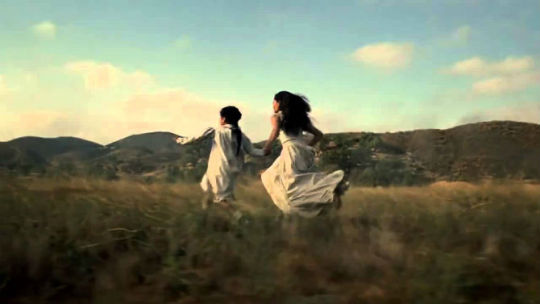
West World was the best show I saw in 2016. Hands down. Anthony Hopkins is a prince among men. I don't know if a finer actor exists in this lifetime. The rest of the cast was wonderful too. Jeffrey Wright, Thandie Newton, Ingrid Bolsø Berdal, Evan Rachel Wood, James Marsden, and the remarkable Ed Harris are all wonderful.
This show. Geez, this show. This is what television should be about. Television should be an incredible experience every week. It should not be about "shipping" or wondering which of your favorite characters is going to die each week a la 'The Walking Dead.'
Hopkins plays the enigmatic West World creator Robert Ford. For those who haven't seen the 70's pulp film, West World is a theme park populated by robotic "people" (called hosts) who are used as entertainment for the rich and infamous (guests). The guests routinely rape, murder, and exploit these sentient robotic beings for their own pleasures. It's a brutal world with a hidden mystery that only deepens as we descend further down the rabbit hole and watch the hosts and guests find their ways through this muddled existence.
The People Versus OJ Simpson: American Crime Story.
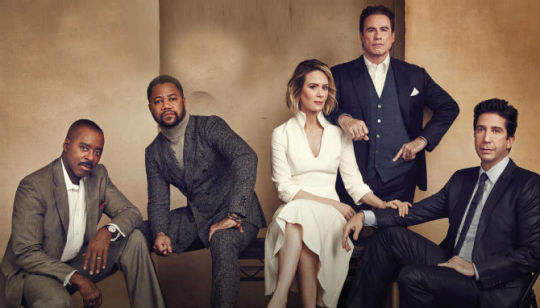
TOUGHEN UP COCHRANE.
THIS IS THE SMOKER'S LOUNGE.
DAYCARE IS ON THE FIRST FLOOR.
Marcia Clark [to Johnny Cochrane]
Riveting, fascinating, incredible. These are a few of the adjectives I would use to describe this show. Sarah Paulson as Marcia Clark was transcendent. I don't think there was a finer performance in 2016, besides Hopkins in West World...and that's Anthony Hopkins. Likewise, Courtney B. Vance as Johnny Cochrane is crazy good. Similar to 'West World,' nearly everyone in this series if fantastic.
High marks to creators Scott Alexander and Larry Karaszewski and producer Ryan Murphy for delivering a stellar sister show to 'American Horror Story.' This is what happens when the writing, the direction, and the actors all come together in a perfect symphony. There were very few weak links here.
Sterling Brown as Christopher Darden, David Schwimmer as Robert Kardashian, Nathan Lane as F. Lee Bailey, Connie Nielson as Faye Resnick, were all close seconds behind Paulson and Vance. Surprisingly John Travolta as Robert Shapiro was very very good. I didn't find Cuba Gooding Jr. as convincing but he does good work here too.
I remember being a young High School student when OJ Simpson took his infamous ride after the horrifying murders. It was a terrible terrible time. After watching this mini-series, clearly I only knew the half of it. This series is just mind boggling good. So even if you remember the mid-90s and think you know what happened--you really don't.
The series also re-emphasizes the humanity lost that night--the lives of Nicole Brown and Ron Goldman. Somehow the murders of these two people were lost in the media madness. The series brings the tragedy of their murders to the forefront, along with a behind the scenes look into the trail of the century and the people behind it. If you haven't seen this series you simply must.
The Exorcist.

Wow, just wow. I have only seen the original 1973 'The Exorcist' all the way through one time in my life. I assume I saw it on VHS in the late 80s or early 90s. Once was enough. The film terrified me so badly I vowed to never watch it again. IMO it's the scariest movie film I've ever seen and I have seen a lot of films.
Needless to say, I was very hesitant to watch this show, but the casting of Geena Davis changed my mind. I was not disappointed. 'The Exorcist' television series is completely unpredictable and fresh. The fourth episode felt like a season finale. Unlike the overtly predictable 'The Walking Dead,' 'The Exorcist' writers know how to write good television without stupid cliffhangers or killing off characters for ratings.
'The Walking Dead' is so predictable that even the hardcore fans have stopped watching the show, excluding the premieres, the mid-season finale, and the season finale. The ratings have fallen to season 3 levels, which doesn't surprise me.
Similar to 'Westworld,' 'The Exorcist' threw the television play book out the window and decided to write each episode like it could be its last. So strap in and get ready for a wild ride . You haven't seen television like this in a loooong while. And what a relief that there are actually good writers left in the world. But my favorite thing about this show is that in the end--good always conquers evil.
American Horror Story: My Roanoke Nightmare.

This season got a lot of flack, but I really enjoyed Season 6. It was insane, hilarious, and scary. All of these three things add up to one heck of a season. The series actually made both my mother and sister think it was one of those fake "haunted house" shows. No matter what I told them they literally believed it was a "haunted house" show on the Discovery Channel. It was pretty funny. I had to explain to them on multiple occasions that these are actors, playing actors, playing actors. They still didn't get it. So hats off to Ryan Murphy this year.
My Roanoke Nightmare follows the macabre tale of Shelby Miller (Lily Rabe), played by Audrey (played by Sarah Paulson) and her husband Matt Miller (Andre Holland), played by Dominic Banks (Cuba Gooding Jr.), who move to a haunted house near Roanoke, North Carolina. The casting of Paulson and Gooding is clearly a nod to their roles in 'The People v's OJ Simpson,' where they played Marcia Clark and OJ Simpson. I found Cuba's performance to be much better in 'Roanoke' than in 'The People v's OJ Simpson.'
Miller's troubled sister Lee played by Adina Porter (who is subsequently played by Angela Basset) soon joins them. The house has normal bouts of spookiness throughout the year, but when the blood moon comes out it's on y'all. That's when the ghostly murderous pilgrims arrive. Thomasin White played by Agnes Winstead (Kathy Bates) and her son Ambrose White played by Dylan (Wes Bentley) come out to terrorize their new neighbors and create a reality television phenomenon.
Now that I read all this "played by" stuff I realize how confusing this must be for someone who doesn't regularly watch the show and who isn't familiar with the anthology series regulars. Ok no wonder my mom and sister couldn't understand this.
Stranger Things.
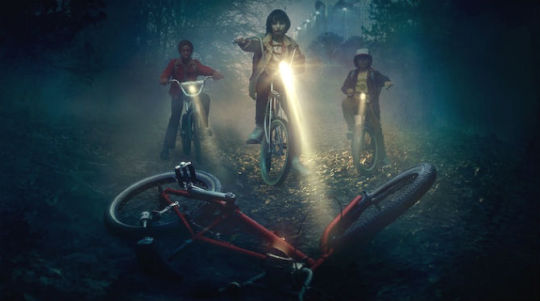
I was but a wee tadpole in 1983, but I do remember the 1980s. I can attest to the nostalgia of 'Stranger Things.' My husband is a few years older than me, so his middle school picture looks like he was plucked out of 'Stranger Things.'
When watching 'Stranger Things' he relived much of his childhood. Afternoons spent in a dank basement playing Dungeons and Dragons, Huffy bicycles with banana seats, baseball caps (he still wears the baseball caps), mullets (he lost the mullet thankfully). According to him, the writers nailed it. Why anyone finds the 1980s to be nostaglic I will never know? Besides 'The Goonies' I don't remember why the 80s is considered such a great time? It certainly wasn't a great time for me. The 1990s was way more fun IMO.
I digress. Surprisingly, Matt and Ross Duffer, the brother writing and directing duo (Millennials who were barely born in the 80s) hit the nail on the head. This show hit all the right marks. My only complaint is that I'm a little tired of seeing 80s adventures for pre-teen boys. Thankfully there was at least one pre-pubescent girl along for this ride this time.
'Stranger Things' follows the adventures of three teen boys who go in search of one of their missing friends, but instead happen upon a mysterious young girl who has super powers. You can see my previous review of the series here.
The OA.
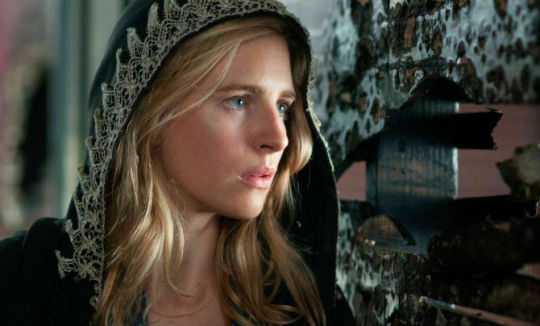
Wow, what a weird little show. I still don't know what happened. Was it a beautifully woven fairy tale or a dimensional rift? I don't know. What I do know is that the 'OA' kept my eyes glued to the screen for the full eight episodes...all the way to the end.
The first episode is a little slow and difficult to get through but once Prairie Johnson (Britt Marling) weaves her bizarre tale as to why and how she disappeared for eight years, she draws you in. Johnson has been rendered blind by a childhood accident. She disappears for eight years, but returns suddenly with her sight restored. The mystery behind her identity and her disappearance unravels before you in a remarkably beautiful story.
Black Mirror. Season 3.
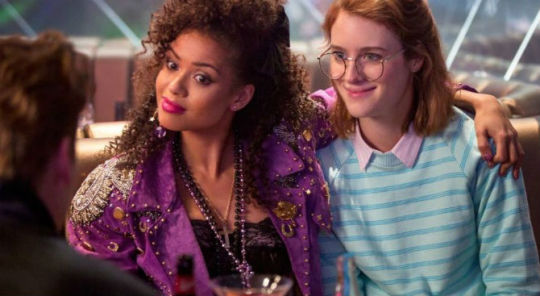
Season 3 of 'Black Mirror' started with a bang, starring Dallas Bryce Howard and Alice Eve. Like other wonderful long lost shows, the British anthology has transitioned to Netflix. 'The Twilight Zone'-like series frequently discusses the perils of social media and technology.
The first episode 'Nosedive' has a 'Pleasantville' on drugs vibe. Everyone has a social media rating on a scale from 0 to 5 in which people rank their interactions with you. Howard's character is a classic overachiever, but can't seem to break past her score of 4.2. When her childhood best friend and social media darling asks her to be her maid of honor she jumps at the chance but things don't go as planned. Howard's character proceeds to have an epic meltdown. It's a wonderful metaphor for our overly obsessed social media culture.
But my favorite episode thus far has been 'San Junipero' with Gugu Mbatha-Raw and MacKenzie Davis. It begins with a heavy dose of 80's nostaglia. Two women played by Mbatha-Raw and Davis meet in a 1980's club in San Junipero. Their unfolding relationship is both beautiful and tragic. The episode touches on big themes like aging, infirmity, and immortality. These two episodes of the third season are an absolute must-see. This episode reminded me just how good of an actress Gugu is. She's brilliant and should get more work immediately!
Flash. Season 3.

Flash is a sweet little feel-good television series. It's so much fun to watch, relax, and unwind with. It's not meant to be taken seriously or have deep thoughts. It's just one of those light and airy shows that you don't have to think about it.
The writers are actually quite good. 'Gotham' is a close second. 'Gotham' reminds me a lot of Tim Burton's 'Batman' films--it's kitschy, dark, humorous, and colorful. It should be noted that there is a such thing as a bad superhero television show--if 'Legends of Tomorrow' and 'Supergirl' Season 2 are any indication.
The Fall. Season 3.

There aren't that many slow moving, procedural dramas that peak my interest. Perhaps it's the casting of Gillian Anderson as Master Detective Stella Gibson. It certainly isn't the casting of emotionless robot Jamie Dornan who plays serial killer Paul Spector. I've frequently said that acting wise Dornan is near comatose automaton.
He seems like a genuinely nice person, but I don't find him to be an engaging actor. I assume his popularity has risen exclusively because of his casting in 'The Fifty Shades of Grey' franchise, which is frankly sad.
Thankfully the show has Anderson, John Lynch as ACC Burns, and Colin Morgan as DS Tom Anderson. Season 3 picks up after Gibson finally nabs serial killer Paul Spector after two seasons of cat and mouse. Season 3 follows Spector's recovery from being shot and Gibson's efforts to build a court case against him. The third season is muted but powerful.

I've been on a self-help kick this year. So of course my favorite books have been non-fiction.
Rising Strong by Brene Brown
Tidying Up by Marie Kondo
Love Warrior by Glennon Melton
Zero Waste Home by Bea Johnson
Essentialism: The Disciplined Pursuit of Less by Greg McKeown
On my list to read: Ready Player One.


The Happiness Project by Gretchen Rubin. I tried to like this book, but ultimately Rubin came across as entitled and elitist. I couldn't get past some of the things she actually considers to be problems.

The Walking Dead. Season 7.
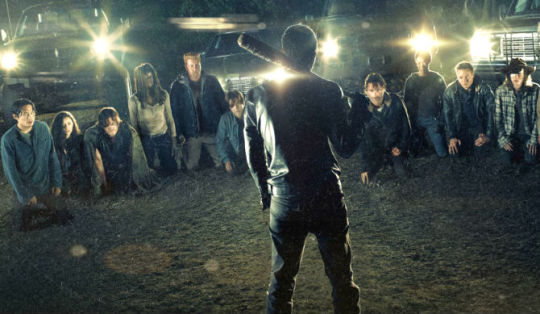
Clearly you saw this coming from my rants above. Kill it before it dies. Please someone cancel this show. If the season 6 "mid-season finale Glen death fakeout" didn't convince you that the writers enjoyed trolling you-- the season finale did. The Walking Dead Season 6 finale was probably one of the worst finales I've ever seen on television. The writers brazenly created the dumbest cliffhanger ever...just to mess with the very people who made the show successful.
Simply put--they got greedy and sloppy. They naively thought that their tried and true formula of screwing over the fans to generate huge ratings for the season premiere would work again. Not so fast. Now people are on to you. Everyone knows that nothing happens until the mid-season premiere, mid-season finale, and season finale. So guess what happened. After the season premiere, TWD had a huge rating drop. The ratings dropped to Season 3 levels. If I'm honest, the ratings drop was well deserved and I hope it continues. TWD needs to go away. NOW. Yes, I am a hardcore fan and comic book reader.
The Return of the 'X-Files.' Season 10.
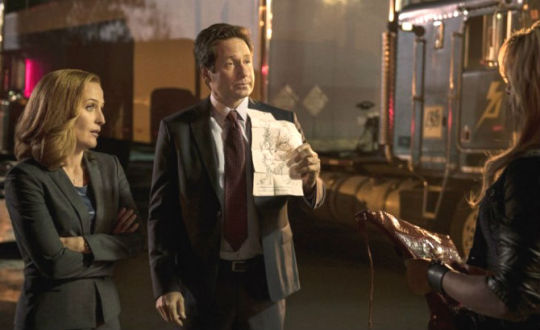
Ok if you know anything about me you know that I LOVE THE 'X-FILES!' I love this show. I remember watching the first episode in 1993. In the late 90s, I remember watching an episode of the 'X-Files' while waiting for my friends to pick me up for my prom. When my husband and I were newly together, we watched the series finale of the 'X-Files' together and cried. It was one of the things we bonded over!
I have literally seen every episode of this show. So I am hardcore fan. Imagine my disappointment that the new 'X-Files' of 2016 was terrible. It was just awful...besides the third episode, which was classic monster of the week 'X-Files.' Every other episode in the 10th season left much to be desired. I don't know what happened? I hope the 'X-Files' comes back again with better scripts. David Duchovny said it best--when a show has been off the air for 14 years things are a little rusty. So perhaps the next season will be wonderful. I'm hopeful there will be a limited season 11 and that it will improve.

My worst list has been seriously culled this year. I made myself a promise that I would not watch as many crappy films this year. I have also chopped films with known diversity issues. Thankfully I have kept that promise. So I honestly haven't seen that many films this year. I know...what's wrong with a movie blogger who doesn't see that many movies? Well, I just couldn't grin and bear watching so much crap anymore. I just couldn't do it. Although I did try to watch some of the bad movies on Netflix or Amazon.
Pride and Prejudice and Zombies.
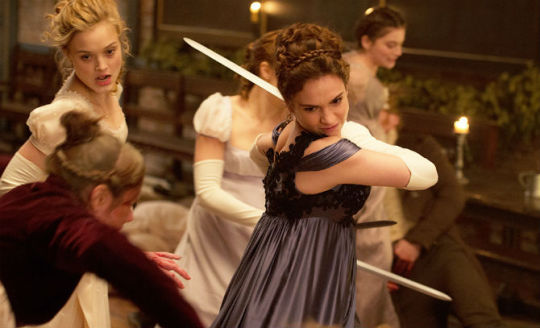
I made it through about 20 to 30 minutes of the film and then had to turn it off. I couldn't do it. I can't even give you a proper review because I didn't see the full film.
Batman versus Superman - Dawn of Justice.
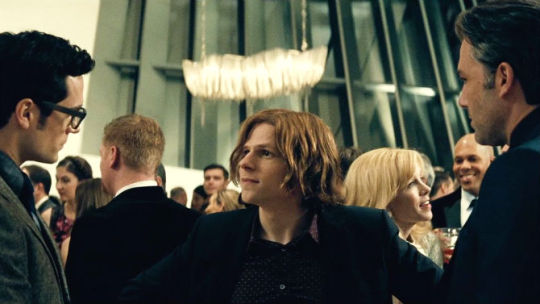
I actually ended up seeing this film a couple of times...accidentally. After all who in their right mind would see this film more than once? The first scene with Batman's parents being killed was actually visually quite stunning. It was tragically sad, but well filmed. Unfortunately the film went downhill from there. The only two good things that came out of that film were Batfleck and the introduction of Gal Gadot as Wonder Woman. Gal seemed to be the only one having any fun in this dismal film.
Gods of Egypt.
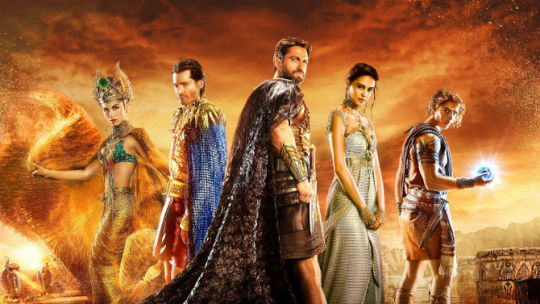
It just happened to be on cable television at my dad's house, so I was forced to watch the first 10 minutes. Alas I could only get through 10 minutes of this sludge. It was that bad. My time is far too precious to watch bad movies. I would rather watch paint dry than finish this film. There were no redeeming qualities.
The first 10 minutes of the film were basically about Bek (Brenton Thwaites) a thief stealing a beautiful dress for Zaya (Courtney Eaton) his hot girlfriend who he shares a hut with. Then we see some of the Egyptian gods in the form of Nikolaj Coster-Waldau recovering from a hangover by taking a bath 'Coming to America'-style. i.e. being bathed by scantily clothed women. Yep, no thank you. Over and out.
This film was on my "no" list from the very beginning. The diversity issues in this film are plentiful, so there was no way I was going to pay to watch this film.
Blair Witch.

It started out fine, but this genre is so dead. Literally. There were some genuinely creeptastic parts in this film that freaked me out, but overall this movie was boring. My dad almost walked out. No joke. My dad and I have only almost walked out on three films, 'Batman and Robin' and 'Alien v. Predator: Requiem.' So 'Blair Witch' is in bad company. The ending was relatively decent, but the plot never truly came together. I can't even.
Neon Demon.

I so wanted to like this moody film. It reminded me a little bit of 'Cat People' (1982) and 'The Hunger' (1983), both of which I adore. I also loved Nicolas Winding Refn's iconic film 'Drive.' Alas, magic in a bottle may only come once in a lifetime. I'm not sure what happened to this film, but it was a little weird even for me.
The plot is basically--the models are literally witches who want to eat the angelic newcomer Jesse (Elle Fanning). Interesting concept for sure, but the film was in desperate need of more susbtance. Some of the characters were fun and strange, but it never found its footing. I wish there had been more Christina Hendricks. More Christina Hendricks may have saved this film for me.
13 Hours. The Secret Soldiers of Benghazi.
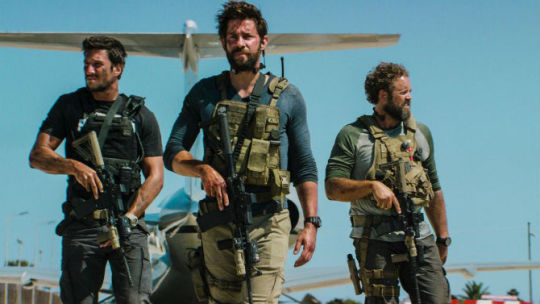
One of things my dad and I do together is see movies--his genre of choice is action and war movies, so despite the reviews of course we saw '13 Hours.' But when a war film gets the Michael Bay treatment be warned. Bay is known for his sensationalism and this film suffers because of it. Unfortunately, '13 Hours' doesn't receive the treatment it deserved. Given that this film is based on true events, I would have liked to have seen a more respectful treatment of the material. Had Ridley Scott or Kathryn Bigelow directed this film, I would have enjoyed the film much more.
London Has Fallen.
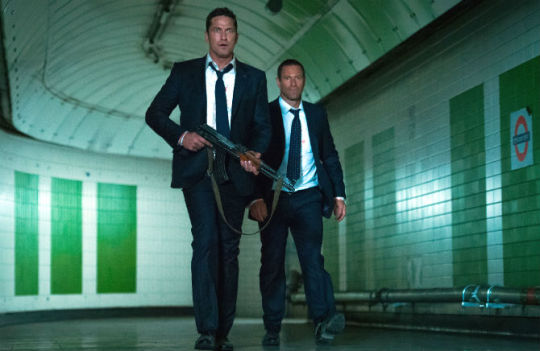
Gerard Butler needs to stop making movies. Now. This was a follow-up from 'Olympus Has Fallen.' It's an over-exploitative shoot-em up film about terrorists infiltrating London. Somehow only Secret Service Agent Mike Banning can stop them. Jack Bauer he is not.
Girl on the Train.

It started out fine, but it soon descends into utter idiocy. Emily Blunt is a solid actress and the other actors are good too. The main problem is the material. The film was marketed as another 'Gone Girl,' but compared to the brilliance of Gillian Flynn's 'Gone Girl,' Erin Wilson's 'The Girl on a Train' doesn't hold up.
Rachel Watson (Emily Blunt) is an alcoholic who spends her days and her nights on a commuter train longing for the life and the house she once shared with her husband David (Justin Theroux). Through the window of the train she watches her husband's new life with his new wife Anna (Rebecca Furguson) and their new baby. In the process she develops a fascination with her ex-husband's neighbors, Megan (Haley Bennett) and Scott Hipwell (Luke Evans). As she spies on them she imagines this perfect couple have equally perfect lives, but looks can be deceiving. Megan goes missing and her husband stands accused. Could the girl on the train have the answers to her disappearance?
Deepwater Horizon.
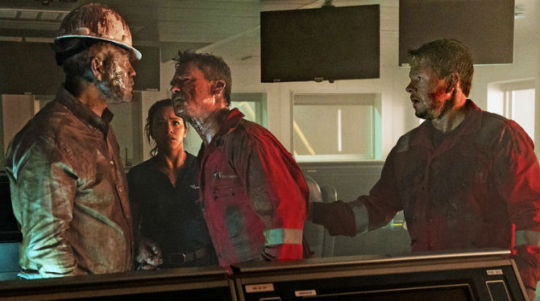
It's not a bad movie, but it's not a particularly good one. Deepwater Horizon had such a tragic and sad topic that I wish it would have been handled in a more serious manner. No offense to Peter Berg, who is the star of one of my favorite B-movie films of all time ('Shocker'), but the director of 'Battleship' and 'Hancock' simply cannot do justice to a film about the 'Deepwater Horizon.'
Like '13 Hours,' it was an over simplification of the events. I would have much preferred to see 'Deepwater Horizon' done in the tradition of 'Spotlight,' 'Zodiac,' or the 'China Syndrome.' I wanted to see a film that took it's time unraveling the tragedy that took 11 lives, polluted an ocean, and destroyed the local economy of the gulf coast-- instead of an action film. Note to self, if Mark Walberg is starring...
The Forest.

Natalie Dormer stars as a woman searching for her missing twin sister. Her sister disappeared into a forest in Japan known to be a place where people frequently commit suicide. It's a little far fetched, but go with it. It only gets worse from here. January release was the first clue.

I'm not going to waste two hours of my life to watch a crappy movie anymore. My time is valuable. So I significantly culled my movie review list in 2016. Had the reviews been better I would have likely seen the films below.
The Huntsman: Winter's War.
The Boss.
X-Men: Apocalypse.
Alice Through the Looking Glass.
Independence Day: Resurgence.
The Legend of Tarzan.
Jason Bourne.
Mechanic Resurrection .
Sully.
Magnificent Seven.
The Accountant.
Assassin's Creed.
Passengers.
Suicide Squad.
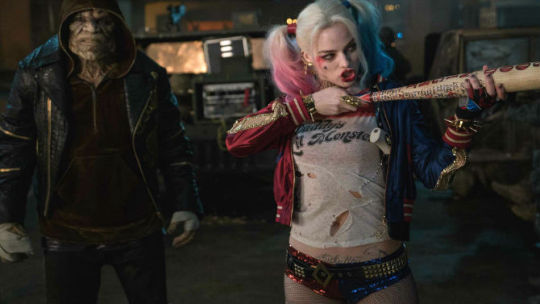
I am a huge DC fan, so it saddens me to say that I had to skip this film. I may eventually watch this movie on Netflix if I drink enough wine to make it worth it. I could literally cry at how DC and Warner Brothers are mismanaging their film catalog with talentless directors and bad writers. I do not like Marvel nearly as much, but even I have to admit Marvel (Disney) knows how to use their catalog properly. Most importantly--they hire good people.
Seriously, it can't be this hard. I am perplexed how/why the WB and DC keep handing hundreds of millions of dollars to the likes of David Ayers and Zack Synder. It just boggles the mind. Even after Ayer's disastrous take on 'Suicide Squad,' someone at WB thinks it's a great idea to hand over the reins to this near-do-well again for the Harley Quinn film. What fresh hell is this?

Manchester by Sea.
Not my type of film. It looks boring. I also do not want to support raging sexual harasser Casey Affleck.
La La Land.
I seriously have no interest in seeing this film. Someone will have to convince me this is actually a good movie and not just propped up by the Academy because Ryan Gosling and Emma Stone "do" jazz.

Doctor Strange

As I've said in previous posts, I'm not going to pay to see films like 'Doctor Strange,' 'Ghost in the Shell,' 'Pan,' or 'Gods of Egypt' or other films with known diversity issues. I adore Tilda Swinton. She and Scarlett Johansson are probably my favorite actresses of all time. No joke. Admittedly, I admire the emails Tilda sent to Margaret Cho in response to the casting issues. Tilda's emails made me love her even more. The problem is not Tilda, but Hollywood at large.
If you recall a post I did last year explaining my new policy of "putting my money where my mouth is." I'm not going to get angry or stomp my feet or create twitter hashtags. If a film isn't representative of people of color or women I just won't see it.
When I say representative I mean representative of the culture and the time the film is set in. If it's set amongst the wealthy houses of Victorian England-- I wouldn't necessarily expect to see much diversity. However, if it's set in 2017 New York City in an urban neighborhood then yes, more diversity should be included. If a character is a Tibetan monk, then perhaps the character should be played by someone of Asian descent?
There are very few roles for people of color in Hollywood, so to change one of those few roles only worsens the diversity issue in Hollywood. I also understand the concern people have about changing white characters to people of color. I have said before that if a character is iconic then it's understandable to maintain that character's ethnicity. But there are very few characters that would fit that iconic classification.
The Bechdel Test
In the same vein, I am trying to see films that pass the Bechdel Test. Meaning: At least two female characters are named and talk to each other. That's it. Just two. Amazingly most films cannot pass this test. Again a disclaimer, if I'm watching a film like 'Saving Private Ryan,' I do not expect a film to pass the Bechdel test.
Also films like 'Sicario' or 'Gravity' are an exception. These films may only have one female cast member, but she's the lead character. But there's no reason that the entire 'Lord of the Rings' trilogy, the original 'Star Wars' trilogy, or 'The Avengers,' does not pass the Bechdel test. Women are 50% of the population for goodness sake.
Birth of a Nation.

I may get some flack for not seeing this, but I refuse to see a film that Nate Parker and writing partner Jean Celestin make. Making matters worse Parker turned this film into a vanity project by starring in it. And yes, I hold Woody Allen and Roman Polanski to the same standard. I haven't seen an Allen film since 'Midnight in Paris' and I don't plan on seeing any of his films either. There are several directors and actors who are on my "nope" list, Parker is one of them. Casey Affleck is also one of them.
#best films of 2016#worst films of 2016#best television shows of 2016#worst television shows of 2016
4 notes
·
View notes
Text
Vampire’s Advocate — in defense of twilight and other pop culture artforms
Before you click ‘back,’ or write me a expletive-laden message, I’m going to get downright anecdotal on y’all.
In the 90’s, I was caught up in the fad that swept the nation called anime as a young and impressionable teen. The wave of improbably leggy,and impossibly-coiffed cartoon girls and boys was the bane of art school instructors everywhere, and I was another victim among millions. This over saturated, often terribly-executed style was shot and killed on sight by instructors. Doe-eyed first year students like me were told to abandon anime and to spend my time pursuing an art style more developed and more respectable.
Despite its obvious shortcomings, anime is quite honestly the reason why I’m an illustrator today. This experience with something that is considered niche at best and horrendously lame at worst, is why I have empathy for those who are enamoured with (un)popular, “low brow” art forms.
I’m definitely not a fan of Twilight nor a defender of its sparkly artistic merits, and don’t get me started on how awful it is from a sexism and racism standpoint (or its abhorrent support of psychologically-abusive, undead centenarians.)
Twilight, like the other illogically-popular, multi-million dollar franchises, are reviled for the very fact that it’s loved by so many. The enlightened hoi polloi despise pop culture as they feel it causes the original, ‘truer’ art form to be overlooked and even diluted. What I am defending, is the notion that popular media can serve a greater purpose: it renders art forms more accessible to the layperson, it inspires individuals to create, and my last point is to not worry, as they’ll grow up.
As a result of my tawdry love affair with anime, I am far more understanding towards those enamoured with something unabashedly mainstream. In art history class, I was made aware that high art was made to be relatively inaccessible on purpose. Modern or High art currently focuses almost purely on concept rather than any practicality nor technical prowess or craftsmanship, which can be alienating to the general populace.
In addition to the deliberate obfuscation of fine or modern art, the fact is that most people encounter the “lower” art form early on in childhood. Pulp fiction, catchy songs, and B-movies were all designed and disseminated with the lowest common denominator in mind. As a result, these mainstream movements end up in the hands of the youth far readily than any Rothko, Vivaldi, or McQueen.
So many visionaries began by experiencing culture through its most “low-brow” forms. Director Quentin Tarantino pays extensive homage (some would say blatantly rips off) to Hong Kong wuxia and 1970s Blaxploitation movies in his films, such as Kill Bill, Jackie Brown, and Pulp Fiction. Musicians such Bob Dylan and The Beatles were heavily inspired by folk music or the zeitgeist of the their Liverpudlian compatriots, respectively.
And it’s virtually impossible to find anyone in the gaming industry that wasn’t inspired by Mario, little 8-bit Plumber that Could.
This leads nicely into my second point of how it’s almost more important that we get books, music, art and culture into the minds of the young, regardless of the nature of the actual content. 450 million copies of Harry Potter were sold world-wide, and 125 million copies of 50 Shades of Grey were moved as well.
That’s 400 million+ of kids spell-bound by the 7-book tale of The Boy Who Lived, and 100 million+ of adults who were actually bound by the trilogy of a slap and tickle whirlwind romance.*
Does the potential of inspiring another generation to create content worth the risk of exposing their minds to absolute drivel? I’m not entirely sure, but I’m cautiously optimistic that the resultant media being better than the original message.
*I highly recommend The Boss by Abigail Barnett. It’s a healthy, ultra-sexy series of a D/s, with a character who’s actually interesting and not an absolute tit.
Lastly, while we may be despondent at the awfulness that is mass-produced popular media, we can maintain some shred of hope if we realize that these teenaged fans inevitably grow up and become adults. Sure, a bunch of Edward Cullen-obsessed adults sounds like a tenth ring of hell, but I’m of the belief that taste evolves and matures.
While my interest began with Sailor Moon/Dragonball Z (which are awesome, I don’t care what you say,) it eventually led me to experience animated masterpieces such as Satoshi Kon’s Paprika, and Hiyao Miyazaki’s Princess Mononoke. Having laughably-terrible tastes is all part of being a teenager, and I’m genuinely happy when someone’s a fan, because they’re likely to explore that subject for all its worth.
Ultimately, the nature of media designed for mass appeal is a double edged sword. I truly believe that even the most vapid-seeming of pop culture possesses an atom of good. To have a young person read crappy books isn’t the end of the world; it puts literature and art into their hands and minds, inspires them to create works of their own, and ultimately, furthers culture, as they’ll likely want to push the art form they love to its fullest potential.
That said, my old Fushigi Yuugi fan fiction and Sailor Moon self-insertion fan art, will absolutely never see the light of day.
0 notes
Text
Bruce Lee and the Art of Scientific Street Fighting
"Organized despair." That's the phrase Bruce Lee often used to characterize many of the prevailing practices within the martial arts world.
Bruce actually had an entire arsenal of these kinds of colorful criticisms, and he wasn't shy about using them: "the classical mess," "dryland swimming," "patternized robots." He employed these terms to argue against where he saw the martial arts going astray, and to illustrate his opinion of how many practitioners were merely engaged in choreographed routines, or as he put it, "artificial techniques … ritualistically practiced to simulate actual combat."
Amid his ever-enduring popularity as a global icon, it is easily forgotten that Bruce's critical perspectives were not well-received by much of the martial arts community, particularly prior to his big screen success. In fact, his outspoken viewpoints had earned him a pair of heated challenge matches early in his career as well as a reputation as a "dissident with bad manners." Yet while his candid opinions were often contentious, they were not without historical precedent.
For example, more than a 150-years prior, the Chinese Emperor Jia Qing issued an imperial edict which included his concerns for the current fighting trends: "Now the Wuyi [martial arts] of Green Army Barracks are all flowery movements, …only for show and performances, not for practical use." Back in the 1930s, the Chinese martial arts historian Tang Hao advocated for reform within the culture, and urged practitioners to "emphasize practicality; renounce embellishment."
The Emperor, the Dragon, and the Scholar were all arguing the same case: namely, that as flamboyance and folklore gained an increasing presence over real world technique, the martial component of the martial arts would only stray further and further from the realities of actual fighting.
With these concerns in mind, Bruce took to calling his own approach "scientific street fighting," promoting a martial worldview that was fact-based, research-driven, and analytical; as well as free of the mythology and romantic hyperbole that was so heavily-embedded within the field. By citing "street fighting," he was emphasizing practical application within the most unpredictable martial context possible, in which "combat is not fixed and is very much 'alive.'"
More than four decades after his passing, Bruce's reformist identity remains remarkably relevant to the history of martial culture as well as the perennial tensions that still populate the martial arts landscape of the 21 st Century.
Bruce Lee pictured on the streets of Oakland, circa 1965. Bruce had contempt for the light-contact martial arts competitions of his era, and kept his focus on application for street fighting. (Photo courtesy of Barney Scollan)
Field Study
By the time he boarded a steam ship in the spring of 1959 to depart Hong Kong for San Francisco, Bruce Lee already had a nuanced martial arts worldview that was based upon tangible first-hand experience. Although he was only 18-years-old, his immersion within Hong Kong's robust rooftop fighting culture of the 1950s had instilled him with a conception of fighting that was predicated as much upon live encounters on the streets than practice in the studio.
Hong Kong's street fighting culture was anchored around the many kung fu schools that packed into the British Colony after the advent of Communist victory on mainland China in 1949, and involved teenage practitioners in regular bareknuckle challenge matches. When the local police began to view the participants of these fights as deviant youth gangs, the teens took the action up to the rooftops, where they could conduct their bouts uninterrupted by the authorities and other adults.
During his mid-to-late teens, Bruce not only took part in these fights, but had a front row seat to regularly watch them and assess what was truly viable. His teacher—the now-glorified Wing Chun master Ip Man—encouraged his students to seek out real world application beyond the classroom. As Bruce's friend and classmate Hawkins Cheung explained, "Ip Man said, 'Don't believe me…Go out and have a fight. Test it out.'" Collectively, Bruce's time amongst this fight culture would comprise a core foundation for his approach to the martial arts for the remainder of his life.
As Bruce arrived to America in the spring of 1959, the Asian martial arts were on the cusp of an initial widespread popularity in the West, and a heavy part of this interest was based around a romanticized view of the Eastern world. Many young American men perceived them as the secret fighting arts of an exotic and mystical culture. Where some exploited this, Bruce condemned it: "80% of what they are teaching in China is nonsense. Here, in America, it is 90%." Unsurprisingly, these views were not welcomed by most of the martial arts community, particularly when coming from a young loudmouthed out-of-towner.
Shortly into his time attending school in Seattle, Bruce ran into his first challenge after a public demonstration in which he implied that kung fu was a more nuanced fighting system than karate. This antagonized local karate practitioner Yoiche Nakachi, who was ten years older than Bruce, had been practicing karate since his childhood in Japan, and was known for his street fighting victories around town. When Bruce finally accepted the challenge, he obliterated Yoiche in 11 seconds, knocking him unconscious and leaving him with a fractured skull. Rather than Bruce's critiques being silenced, they soon grew louder.
Bruce and James Lee practicing in their garage, in east Oakland. Despite their difference in age, the two became close collaborators for the remainder of their lives. (Photo courtesy of Greglon Lee)
"Does it work?"
Beginning in 1962, Bruce began to increasingly gravitate down to Oakland, California, in order to collaborate with James Lee and his innovative group of martial arts colleagues. James had a fierce reputation from his younger days as an Oakland street fighter, and ran a no-nonsense modern training environment out of his garage, where the emphasis was on technique that would be immediately applicable to real world encounters.
Bruce, James, and the other accomplished martial artists in their Bay Area orbit (including Ed Parker, Wally Jay, Ralph Castro, and Al Novak) created a unique martial arts laboratory in Oakland, where they would practice during the day and then hold energetic think tank sessions that ran late into the night. In this progressive martial arts environment, two main points of emphasis emerged—viability and innovation.
"Does it work?" was the simple blunt litmus for any technique in question, and they tested them with methodical analysis across various scenarios. If street fighting was "alive" and choreographed, Bruce argued, why should the preparation for it be? "There is no way a person is going to fight you in the street with a set pattern. Too many practitioners are just blindly rehearsing systematic routines and stunts."
In Oakland, innovation was seen as the antidote to the drawbacks of fixed routine. In an era when most masters frowned upon their students deviating beyond a single system, the Oakland camp enthusiastically embraced the mixing of styles and drew from the wide cross-section of their collective experience. The approach was as expansive as it was analytical: they watched old boxing films, discussed the footwork of fencers, and debated the circumstances of past street fights. In the process, Bruce began envisioning a new system.
At the inaugural Long Beach Tournament in 1964, Bruce gave a contentious demonstration to an international audience of martial artists, in which he "trashed" the widely-practiced horse stance as an impractical technique ("there is stability but no mobility"). In an effort to discouraged cookie-cutter practitioners, Bruce also argued for an individualistic approach in which the student took priority over the system. The response was divided. Some considered Bruce a visionary, while others saw a trash-talking troublemaker ("a bit of an arrogant prick," as one Long Beach participant characterized him).
Even as Bruce was stoking fresh tensions towards a new challenge match, everything remained on the table in Oakland as they pioneered a modern martial arts future. From his garage on the east side of town, James Lee ran his own martial arts book publishing outfit and designed custom training equipment. During his next appearance at Long Beach, Bruce showcased innovative protective gear as a way to conduct both full-contact sparring and martial arts competitions (a sharp contrast to the prevailing light-contact and point-based competitions that were typical of the era).
A menacing street fighter in his youth, James Lee embodied all of the blue collar grit of his native Oakland. On a conceptual level, he was a remarkably creative innovator of the martial arts in America. (Photo courtesy of Greglon Lee)
With all of these habits and viewpoints in mind, Bruce began to incorporate the phrase "scientific street fighting" into his increasingly outspoken public demonstrations. Inevitably, his opinions continued to aggravate the longstanding differences he had with the practitioners of San Francisco Chinatown, where one longtime kung fu master regarded him as "a dissident with bad manners." During a demonstration in front of huge Chinatown audience in 1964, Bruce criticized the masters of the local martial arts culture as "old tigers with no teeth." Logically, a challenge soon followed.
The no-holds-barred fight which occurred in Oakland between Bruce Lee and Chinatown's young ace practitioner Wong Jack Man is arguably the famous martial arts challenge match in modern history. Bruce fell far short of his own expectations after struggling to decisively put his opponent away as he had in Seattle a few years earlier, winning the fight but in sloppy fashion.
Rather than rest upon an unsatisfying victory, Bruce saw the incident as a catalyst for evolution, and his personalized system of Jeet Kune Do soon began to take tangible shape. Bruce synthesized his many influences into an approach that maintained the Oakland principles of viability and innovation, with an emphasis on a simple, direct, and non-classical awareness. And while Jeet Kune Do was the culmination of over a decade of Bruce's research and application, it was not fixed in structure, but intended for constant evolution.
Half a century later, these same principles remain highly relevant to the modern martial arts landscape.
Tape Don't Lie
Recent viral videos which show MMA fighters making quick work of kung fu practitioners during organized bouts are a prime example of the still lingering disconnect that Bruce Lee and other martial reformists were trying to illustrate through their more critical viewpoints.
In a match in Malaysia, video footage shows a Wing Chun practitioner being quickly taken down, pummeled, and choked out by his MMA-oriented opponent in less than 30 seconds. Watching the pre-fight activity, it is hard to not feel that the kung fu fighter was more intent on posturing his way through some kind of Donnie-Yen-as-Ip-Man fantasy, than realistically confronting the "actual combat" looming before him.
If there is merit to the video beyond mere spectacle, it is the simple takeaway that some practitioners remain woefully out of touch with the hard realities of the fighting arts that they have committed so much time and energy. Bruce would refer to these practitioners as "dryland swimmers," and argue that to be a fighter, you need to acclimate to actual fighting, just as a swimmer needs to understand the reality of being up to his neck in water.
Of course, no fight video has more clearly gotten to the core of these still lingering issues than the recent high profile showdown in China between brash MMA fighter Xu Xiaodong quickly beating down the supposedly mystically-powered tai chi practitioner Wei Lei. The incident has since become international news, and sparked a fresh debate (as Xu had initially hoped) over the real world validity of martial systems.
The confrontation had emerged out of a war of words in which Xu bluntly called out Wei Lei's self-touted magical abilities as utterly fraudulent. When the dispute culminated into an actual match between the two, Xu easily overwhelmed Wei in about ten seconds.
The showdown between tai chi practitioner Wei Lei and MMA fighter Xu Xiaodong has hyper-charged perennial debates over the viability of martial systems.
Historically-speaking, fights of this nature aren't anything particularly new. Martial arts historian Ben Judkins recently posted an account on his site Kung Fu Tea that described a similar cross-style matchup in which a tai chi practitioner lost a high profile public exhibition in China… back in 1928. Prior to the era of widespread Internet, the early days of the UFC during the 1990s also provided plenty of lopsided encounters for consideration. In the age of YouTube, such scenarios are hardly new revelations, as these kinds of fight videos surface often and in abundance.
With all this in mind, it has been the post script to Xu Xiaodong's victory over Wei Lei that has proven far more illuminating than the fight itself, and which speaks volumes about the longstanding reluctance for sections of the martial arts community to detach itself from mythology and embrace an evolution towards a fact-based martial sensibility.
In the wake of his victory, Xu has been publicly condemned by numerous Chinese agencies, including the Chinese Boxing Association and the state news outlet Xinhua. The Chinese Wushu Association declared that the fight "violates the morals of the martial arts" (despite the fact that both men willfully participated and that the contest itself was conducted with a referee). It also appears that government authorities have shut down Xu's blog and censored articles related to the fight. Collectively, the reaction to the incident within China has been so harsh that it has caused Xu to go into hiding, leaving him to an issue the statement: "I'm fighting fraudulence, but now I've become the target."
Even in mind of the reported abrasiveness of Xu's behavior, the entire aftermath of the incident resonates with a kill-the-messenger-style of blowback, which clings to a flat-earth conception of the martial arts. Like Bruce, Xu could just as easily be called "a dissident with bad manners" for his outspoken and brash approach. Yet the offensiveness of his "bad manners" doesn't eclipse the merit of his dissent, and the backlash is ultimately an old storyline within the history of the martial arts, which affected Bruce Lee and others who dared to pull the curtain really far back.
Tang Hao was the father of modern martial arts history. While his work still holds up, many of the myths he sought to dismiss still thrive nearly a century later.
Original Dissent
Most martial artists are unfamiliar with the work and career of Tang Hao, yet historians and academics within the field remain enamored with him. And rightfully so, as Tang Hao was the father of modern martial arts scholarship and fact-based history.
His work dates back to the 1920s, where amid an explosion of fanciful literature, the Chinese martial arts were ripe for a sober historical assessment. A lawyer by trade and an experienced practitioner of the martial arts, Tang Hao wrote numerous books and articles that dismissed much of the prevailing history surrounding the Chinese martial arts as fanciful folklore.
In 1920, he published Study of Shaolin and Wudang, in which he tackled the disparity between fact and folklore in Chinese martial arts history, taking aim at, as historian Ben Judkins put it, "as many sacred cows as possible." He dismissed the mythology surrounding the Shaolin Temple, and criticized much of the quasi-mysticism that had been attached to the martial arts in his time.
In drawing sharp lines between mythology and fact, Tang Hao's work was not met by the Chinese martial arts community with interest and gratitude, but rather, with hostility and outrage; and as a friend of his would later write in a memorial essay, "some ruthless and self-proclaimed practitioners of Wudang and Shaolin made a plan to attack Tang Hao and beat him up." This was only prevented when a reputable third party intervened on his behalf. Despite these tensions, Tang Hao would continue to write about and promote an evidence-based history of the Chinese martial arts for the rest of his career.
Almost a century later, his work still holds up, though it is likely that Tang Hao would be dismayed to see so many modern day practitioners still clinging to mythology in the 21 st Century, such as the idea that the Asian fighting arts originated within the Shaolin Temple. This storyline asserts that the semi-mythical Bodhidharma had passed along a series of fighting exercises to the Shaolin monks to invigorate their physical well-being, in the 5th Century A.D. There is abundance of factual scholarship which says otherwise (in which historians point to a confluence of factors within China that saw the rise of unarmed fighting styles around the 16 th Century). Yet, the Bodhidharma legend persists into 2017, despite it being the equivalent of a modern Olympic athlete citing Zeus and the gods of Olympus as the founders of the summer games.
Martial historians see the unifying thread of reformist effort that runs through the careers of Tang Hao and Bruce Lee. As historian Brian Kennedy writes, "Many Chinese martial systems had become, in the famous words of Bruce Lee, 'cramped and distorted' by lots of different rituals, different titles, theories with little or no basis in reality, fake lineage, and pseudo-religious overtones… Tang Hao, much in the same vein as Bruce Lee, wanted Chinese martial arts stripped of this extra baggage."
In this sense, both Tang Hao and Bruce Lee would have likely also been dismissive of Wei Lei's supposed magical powers, just as they would have been keenly familiar with the post-fight treatment that Xu Xiaodong has been subjected to.
Seishiro Okazaki (bottom row, center) pictured during an advanced jujitsu seminar at his home in Hawaii, February 22, 1948. Okazaki's classes had very large enrollment, and over the years he would teach thousands of U.S. servicemen at the Honolulu YMCA. (Photo courtesy of Bernice Jay)
Martial Proving Ground
The debate that has followed Wei Lei's defeat has involved perspectives that are as varied and expansive as the martial arts themselves. Health, fitness, and self-cultivation are all legitimate and popular reasons for why a wide variety of people pursue the martial arts in the 21st Century. Yet when it comes to this recent fight in China, there is no way around the bottom line issue of martial viability. Just as Bruce and his colleagues in Oakland had asked—"Does it work?"
As many have correctly pointed out, the defeat of one practitioner does not conclude a complete worthlessness of any given system. But if the issue in question is the martial component of the martial arts, then there is really no other testing ground for the traditional Chinese martial arts to bounce back from Wei Lei's loss than within the ring. And in this regard as well, there is positive historical precedent to draw upon.
In 1922, British heavyweight boxer Carl "KO" Morris arrived to the Hawaiian Islands, and put out an open invitation to Asian martial artists to test their mettle against him in the ring. Morris had a reputation for being openly condescending towards the Asian fighting arts, and his challenge was quickly considered a standing insult to the islands' large Japanese immigrant community.
At the time, Hawaii was forming into the first great international martial arts hot-spot. Based upon immigration trends presented by economic opportunities within the islands, a wide array of Asian fighting styles arrived to the islands and quickly began to cross-pollinate.
"Hawaii was the first great melting pot of Asian martial arts," explains eclectic martial arts master Dan Inosanto. "It's where Chinese trained Japanese, Japanese trained Chinese, Chinese trained Filipino, and then Hawaiians themselves got involved in all those arts, too." (With this in mind, it is logical that the early modern mixed martial art fighting system of kajukenbo was born of the Hawaiian Islands.)
The first Japanese fighter to take up Morris' challenge fared poorly in a first-round knockout. However, the Japanese martial arts community did not concede this as evidence of anything. Instead, they appealed to a local martial artist that fully embodied the multi-faceted nature of the Hawaiian fight culture.
Seishiro Okazaki came from a long line of Japanese samurai. Like many others of his era, he migrated to Hawaii as a young man for work opportunities on the islands' sugar cane fields. There, at the age of 19, he began studying jujitsu as a means of cultivating his physical health. He spent the next twelve years of his life not just practicing jujitsu (of which he mastered three different styles), but any martial arts that he could seek out on the islands: kung fu with a 78-year-old Chinese master in Kohala, karate from an Okinawan, Fillipino knife fighting, western wrestling, and the native Hawaiian martial art of lua.
Upon taking up the standing challenge, Okazaki prepared for the fight by proactively researching and testing out techniques that could be applied against a boxer of Morris's size and abilities. He observed boxing matches between U.S. servicemen on the island, and aimed to design an approach that would be stifling to pugilist technique. After weeks of research, Okazaki developed an especially low fighting crouch, with the reasoning that boxers had little practice punching downward.
Seishiro Okazaki (seated) pictured with student Wally Jay, who would become one of Bruce Lee's closest colleagues in Oakland. (Photo courtesy of Bernice Jay)
On May 19, 1922, Okazaki met Morris in the ring for a wild bout. Early in the first round, Okazaki misjudged Morris's reach and had his nose broken in the first round. Still, he bounced back and managed to throw Morris out of the ring twice. Seeing the boxer hang his jab too long in a subsequent round, Okazaki drove low and threw his opponent to the matte in a move that appeared to break Morris's arm on the spot. Humble in his victory, Okazaki visited Morris in the hospital. Later, Morris would study jujitsu in Okazaki's class during the remainder of his stay in Hawaii.
Xu Xiaodong's challenge to the traditional Chinese martial arts community is no different than the one Morris posed towards the Japanese in Hawaii some 90 years earlier. Rather than censor Xu's viewpoints or put forth empty excuses for Wu Lei's loss, the traditional Chinese martial arts community should be anxious to get a new fighter to step up to the challenge. Some have offered, yet the state seems content with publicly reprimanding Xu.
Seishiro Okazaki did not defeat Carl Morris with mythological stories or magic tricks. He won through research, analytical design, and live combat execution; essentially, the essence of what Bruce Lee had characterized as "scientific street fighting." It is as relevant now as it was then.
Charles Russo is a journalist in San Francisco. This article contains information that is excerpted from his book - Striking Distance: Bruce Lee and the Dawn of Martial Arts in America.
Illustration by Andrew Strawder.
Bruce Lee and the Art of Scientific Street Fighting published first on http://ift.tt/2pLTmlv
0 notes
Text
This Photographer Captured the Glitz and Despair of the Global Culture of Wealth
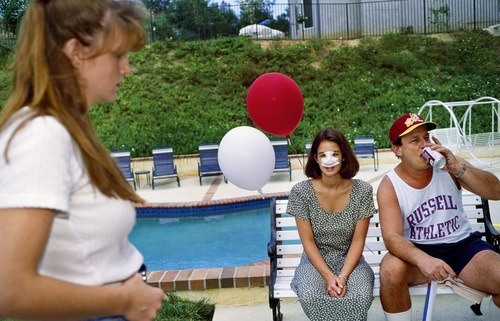
Lindsey, 18, at a Fourth of July party three days after her nose job, Calabasas, California, 1993.
Lauren Greenfield
Fahey/Klein Gallery
There were many people for whom the election of Donald Trump as President of the United States came as a total surprise. Photographer Lauren Greenfield was probably not one of them. For nearly three decades, Greenfield has been meticulously documenting wealth: those who have it, those who aspire to it, and its pernicious influence on our culture.
In that period, she’s watched how a worship of prosperity has spread, transmitted and amplified through technology, popular culture, and the media. Is it any wonder that someone who so perfectly embodies our fascination with wealth, and all the emptiness and artifice that so often lies beneath it, ultimately snaked his way into the White House?
“Generation Wealth,” opening later this month at the International Center Photography, features over 200 of Greenfield’s photographs from her decades-long exploration of the culture of affluence in its many facets. It’s accompanied by a mammoth book of the same name, published by Phaidon this May and bound (naturally) in gold cloth.
Greenfield decided to bring these works together, she said, in the aftermath of the financial crisis. She, like many Americans, found herself reflecting on what had caused an entire nation, seemingly, to run amok.
She realized in looking back at her early work that what she had documented was “a time of cultural change, and of change in our values and change in technology which was a big driver of these values,” she said. “Where I started ended up being really important, because it was kind of the beginning of all of these trends which I ended up covering for 25 years.”

Lauren Greenfield, Xue Qiwenin, 43, Shanghai, 2005. © Lauren Greenfield/Institute. Courtesy of Phaidon Press.
Greenfield had not intended to become a visual chronicler of the wealthy and their aspirants, an F. Scott Fitzgerald or an Edith Wharton wielding a camera instead of a pen. She grew up in what was then the grungy neighborhood of Venice, Los Angeles, but attended the ritzy private high school Crossroads, alongside the children of Hollywood’s rich and famous. After graduating magna cum laude from Harvard University in 1987 with a degree in visual and environmental studies, she embarked with her mother, a psychology professor, on an assignment for National Geographic in Chiapas, Mexico. She quickly realized her status as a cultural outsider (and the discomfort her subjects felt with being photographed) was hindering her work; she longed instead to return to Los Angeles and “[turn] the camera on my own culture,” she said.
That project became her first book, Fast Forward: Growing Up in the Shadow of Hollywood (1997), a broad exploration of Los Angeles youth culture, which took her to East and South Central L.A. to photograph the young people who were part of, or adjacent to, the gang culture that Crossroads students, enamored of hip-hop and graffiti, tried to emulate. At the same time, she notes, the youth in South Central and East L.A. themselves lusted after the markers of wealth (gold chains, designer clothes) the Crossroads kids took for granted.
“There was this kind of homogenization of culture that I was seeing from kids from really different backgrounds, even in the ’90s,” said Greenfield. “Part of Fast Forward is about the rich kids and [their] disproportionate influence.” The Generation Wealth book, she added, is “really not about wealth, it’s more about the influence of affluence and the aspiration to wealth.”
So what does Generation Wealth look like? Greenfield notes that it’s “really not about wealth, it’s more about the influence of affluence and the aspiration to wealth.” As the photographer writes in the introduction to the book, her subjects “seek material-based status, from Minnesota to Milan, South Central Los Angeles to Shanghai, Dubai to Moscow.” At one end of the spectrum, there are mansions, designer handbags, two-year-olds getting pedicures, the staid rituals of France’s aristocrats, portraits on the tarmac in front of a private jet.
But just as compelling, if not more so, are the images of what it looks like to merely aspire to that lifestyle, with varying degrees of success. There are unfinished homes in Dubai after the financial crisis, women making thousands of dollars a week as strippers to support their families, people posing on a toilet made of solid 24-karat gold in Hong Kong, four-year-olds sporting tiny false teeth at beauty pageants, the funeral of a teenage gang member in an L.A. suburb. Across the social and economic landscape, power and money tends to concentrate in the hands of men.
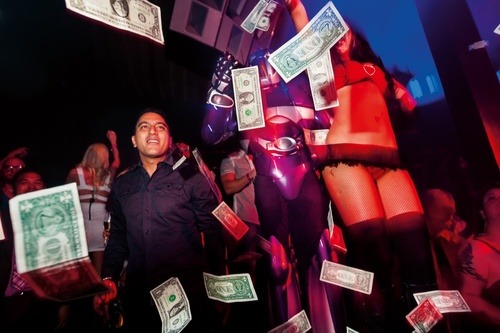
Lauren Greenfield, Marquee nightclub, Las Vegas, 2012. © Lauren Greenfield/Institute. Courtesy of Phaidon Press.
“It was important to me to include so many different kinds of places because in a way, what I’m looking at are the similarities more than the differences,” Greenfield said.
In chronicling Russia’s emerging elite, for example, Greenfield meets a Moscow real estate developer whose luxury homes come pre-stocked with a library of the finest Russian, British, French, German, and American literature, and an art collection for which he’s also printed a hefty catalogue that the buyers of his homes can leave prominently displayed, in case there’s any doubt as to how important the art collection is. But Greenfield is quick to point out that deploying culture to signal taste and class is on a continuum with the behavior of a newly flush finance bro in New York, only more visible.
“As an oligarch, you could buy culture. And in a way that was the ultimate thing to purchase: education, class, culture…kind of what money can’t buy,” said Greenfield. That explicitly transactional approach to culture might seem extreme, she said, but it can make visible similar, if more hidden, dynamics around us.
“In New York, you might have a wealthy person who hires an art consultant who buys for them, and so the owner doesn’t actually know anything about the art,” she said. “Well, that’s a hard thing to document here: It’s like so subtle, they probably would not want to share that they don’t know the provenance of their actual art.”
In both the book and the show, Greenfield’s photos are accompanied by the subjects’ own words. There is a series of portraits of Jackie Siegel, the wife of time-share mogul David Siegel, dubbed the Queen of Versailles (after the spectacular mega-mansion the couple was building before the economy collapsed in 2008). Siegel started her career as an engineer at IBM in upstate New York, but quickly realized she’d fare better modeling in New York City and marrying rich. “You can never be too rich or have big enough boobs,” she told Greenfield, reflecting on her four breast augmentations (whose end result fills the entire frame of one photo).

Adam, 13, and a go-go dancer hired to entertain at a bar mitzvah party at the Whisky a Go Go nightclub in West Hollywood, 2012.
Lauren Greenfield
Fahey/Klein Gallery
Or consider 13-year-old Adam, a subject in Fast Forward who told Greenfield that he and his peers feel compelled to spend $50,000 on a bar mitzvah or risk being unpopular. “Money affects kids in many ways. It has ruined a lot of kids I know. It has ruined me.” His parents know that, and send him to summer camp in Michigan where “the kids are so different,” he said. “They are nice.”
“He had so much insight,” Greenfield said. “He was kind of a social critic, but was still affected by these pressures, and right in the middle of them.”
That helped her see that the subjects’ voices were a critical component of the project, documentation that rounds out—or often stand at odds with—the accompanying images. “A lot of my work is about this conflict and contradiction between image and substance,” she said.
“Photography is a great medium to think about image, because I can use glossy colors and shiny surfaces and strobe,” Greenfield continued. The interviews, by contrast, “provide a deeper cut, sometimes even a contradictory cut to what’s going on. The photographs are really my perspective, and the interviews allow their voices to come through in a deeper way.”
She knows that ambivalence from her own relationship to material goods, even as her decades-long dive into the culture of wealth has made her extra conscious of how destructive it can be to covet.
“If I didn’t care about those things I don’t think I’d be able to document it either,” she said. “I’m not immune to the things that I cover. When I go into a store I’m…attracted and excited by shiny objects. I kind of know that about myself so I try to stay out of that environment unless I really want something or need something.”

Lauren Greenfield, Ilona with her daughter, Michelle, 4, Moscow, 2012. © Lauren Greenfield/Institute. Courtesy of Phaidon Press.
Greenfield credits her kids with holding her accountable, describing a recent incident when her youngest son chastised her for putting a $55 face cream in the grocery basket. Perhaps more Americans could use a similar watchdog. The nation’s credit card debt hit highs this year not seen since 2009, and defaults have begun to climb, too. The worship of affluence, by some measures, is as strong as ever, with Donald Trump its reigning deity. Greenfield’s ongoing examination of wealth (she’s currently working on a related documentary film) feels more urgent than ever.
Incidentally, Trump is one person who she never got to capture on film, even though she tried, although she observed that time-share magnate David Siegel (who called Trump’s election “the greatest thing that’s happened to me since I discovered sex”) embodied many of the same qualities.
“The one dream shoot that I never got for Generation Wealth is the President, because he embodies so many of the qualities of Generation Wealth,” she said. “That was probably the fish that got away.”
—Anna Louie Sussman
from Artsy News
0 notes